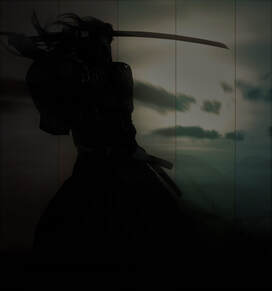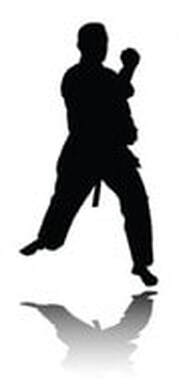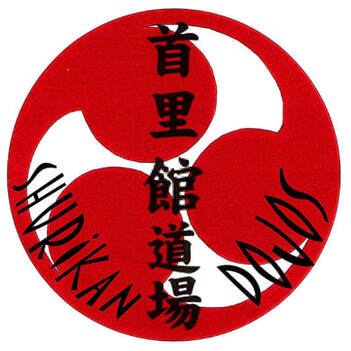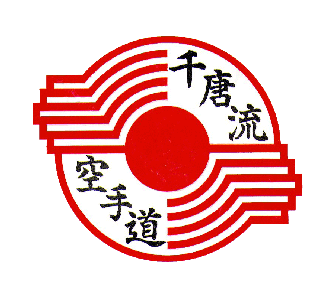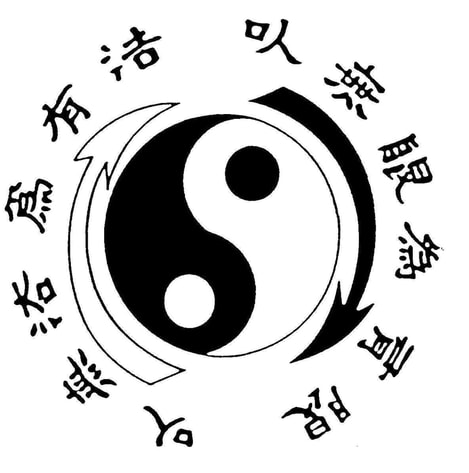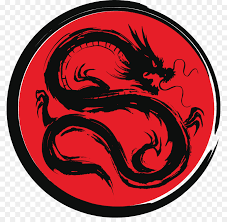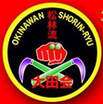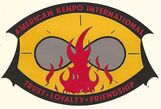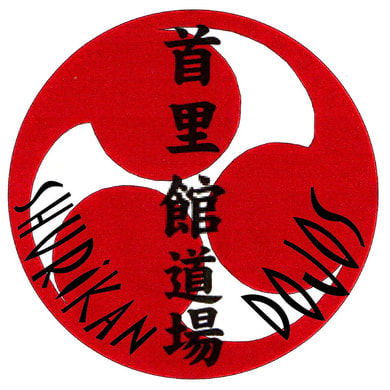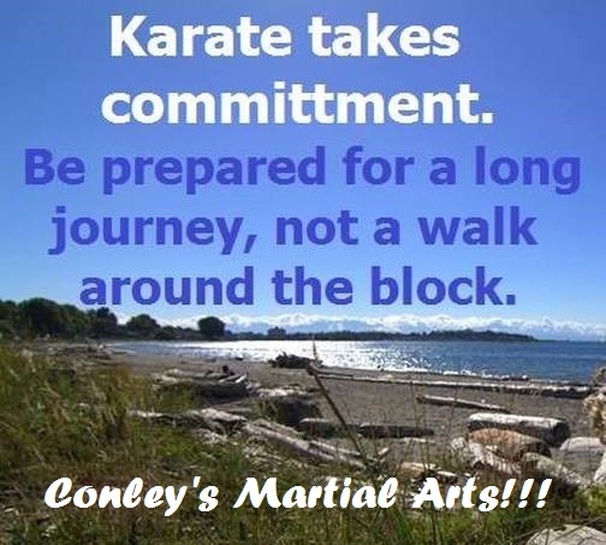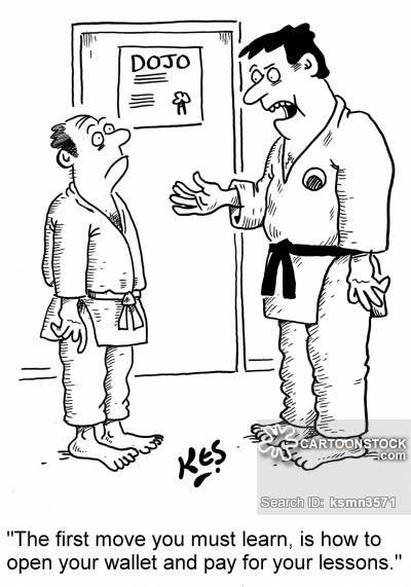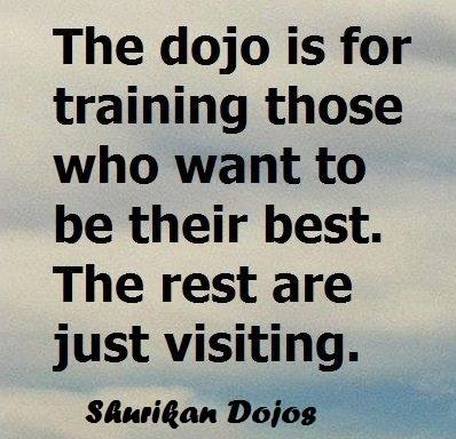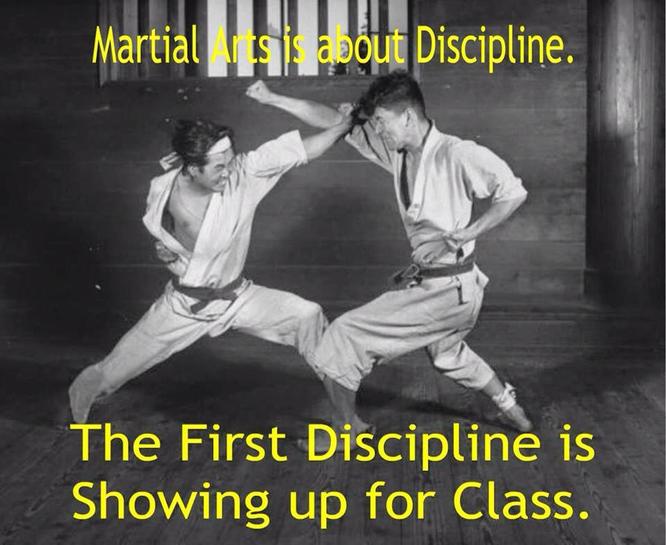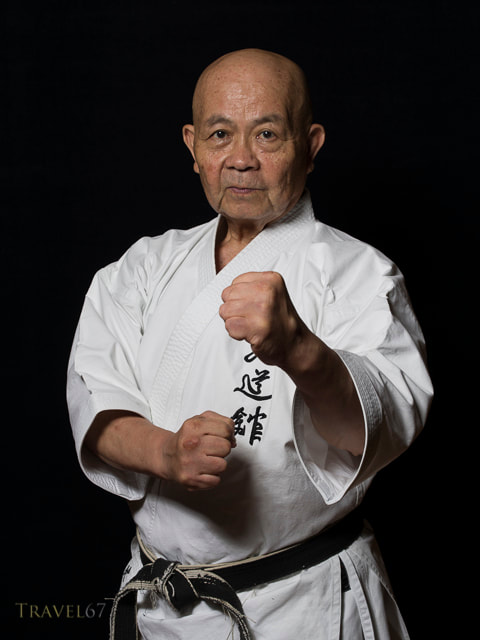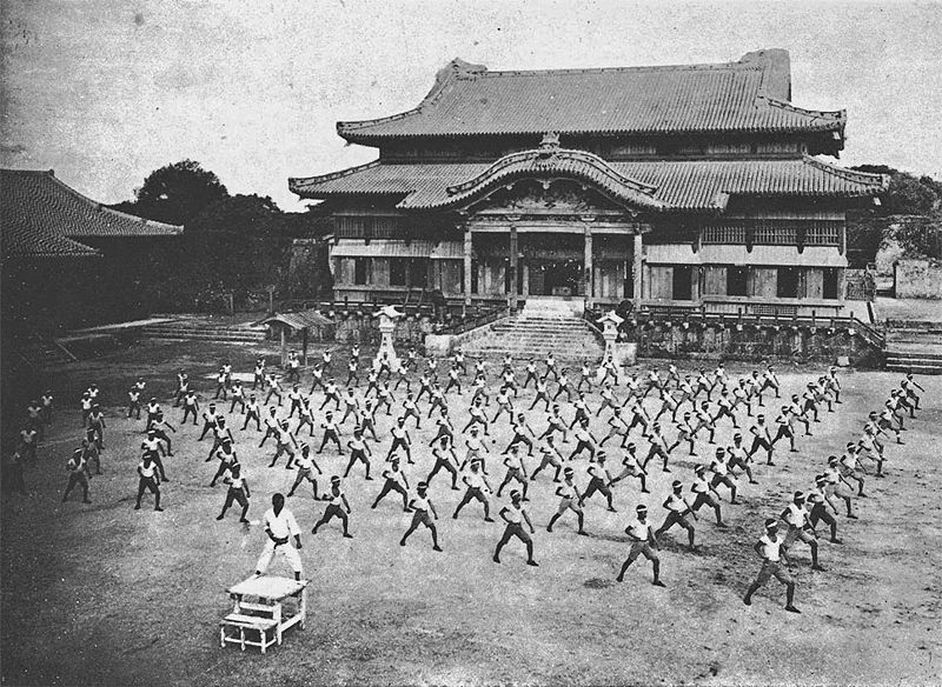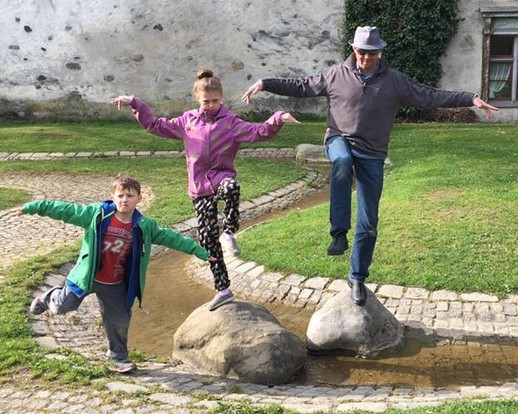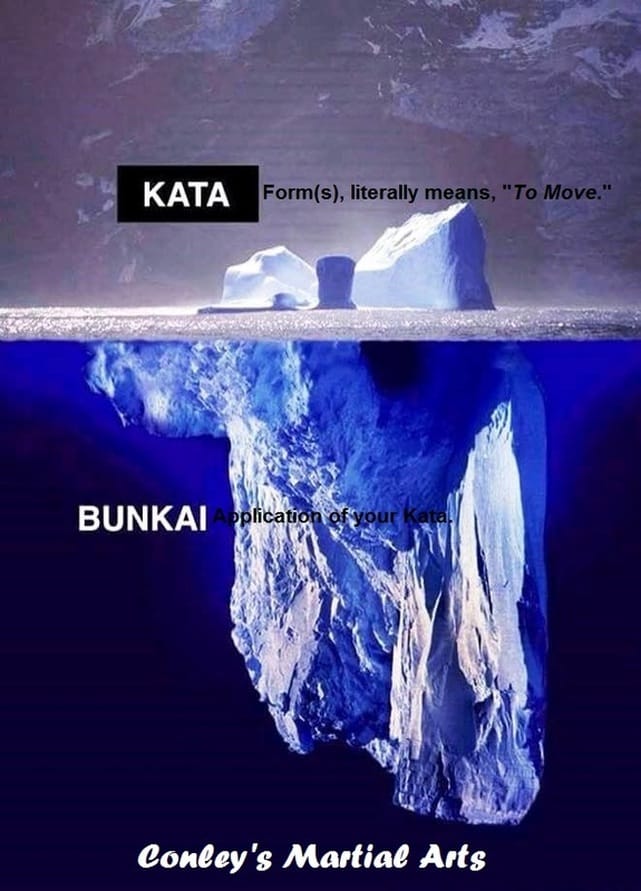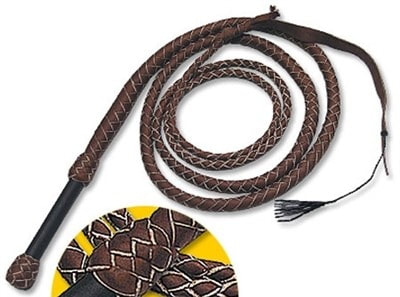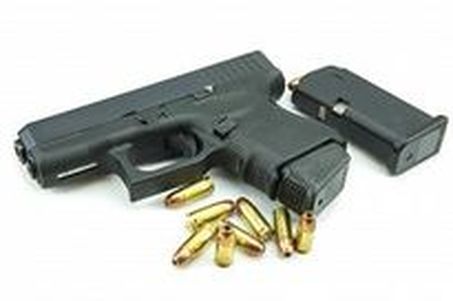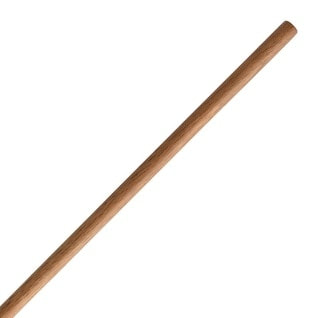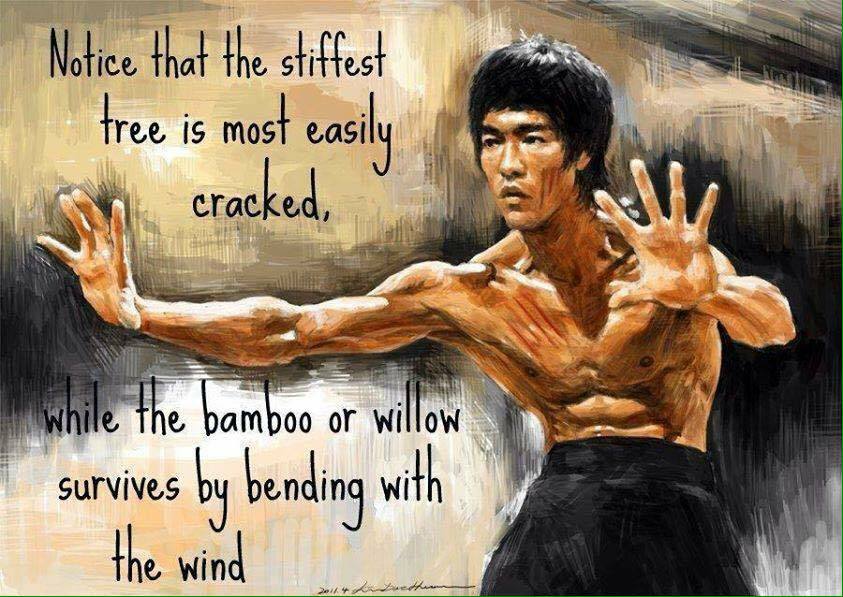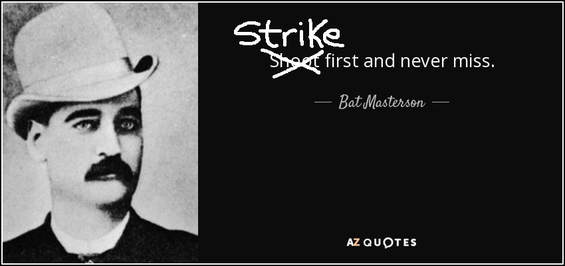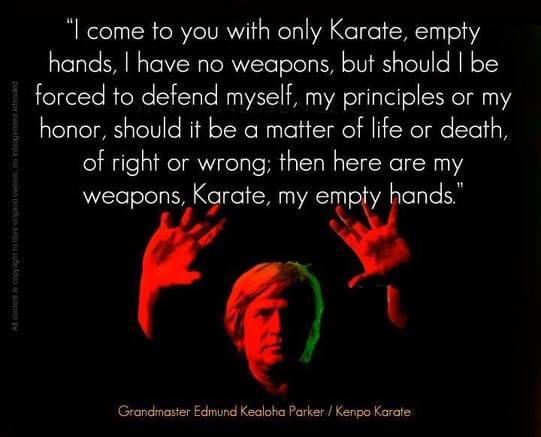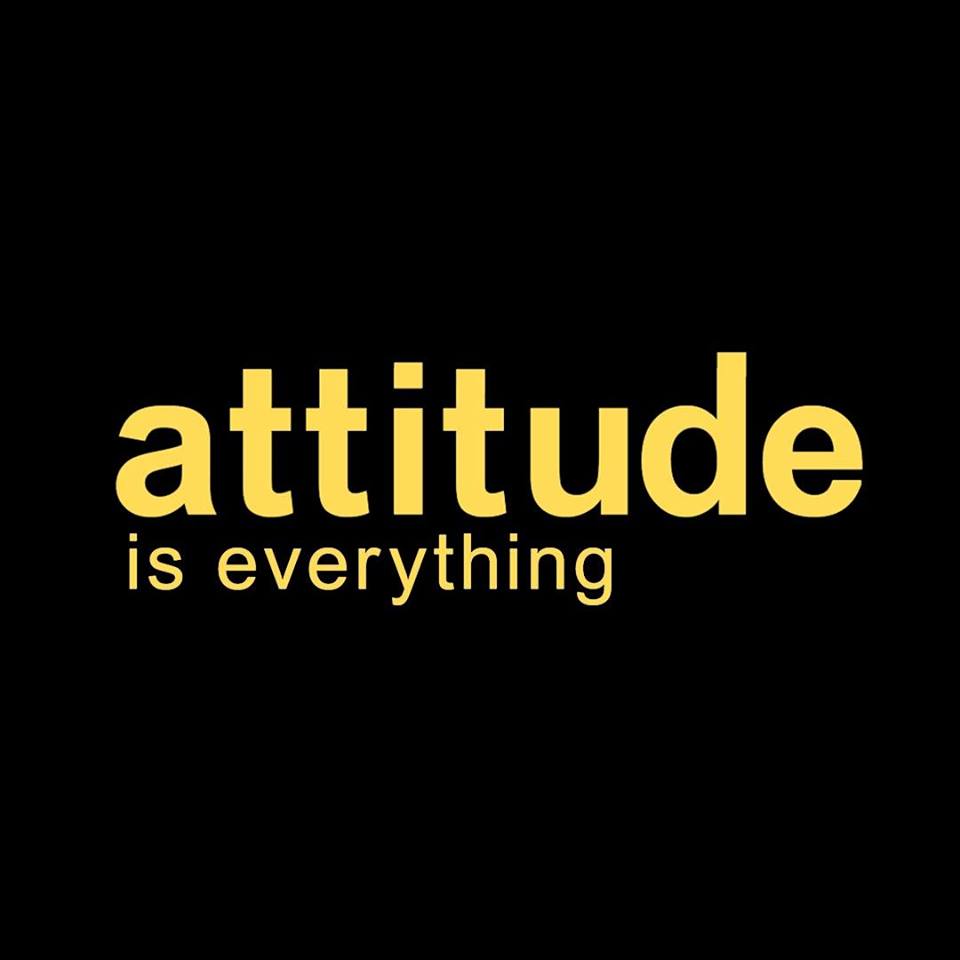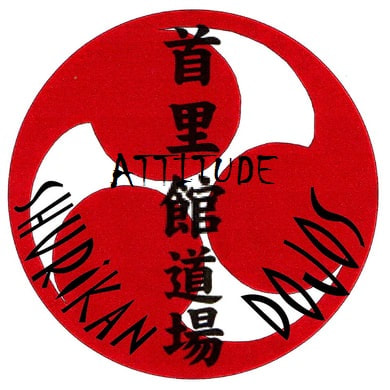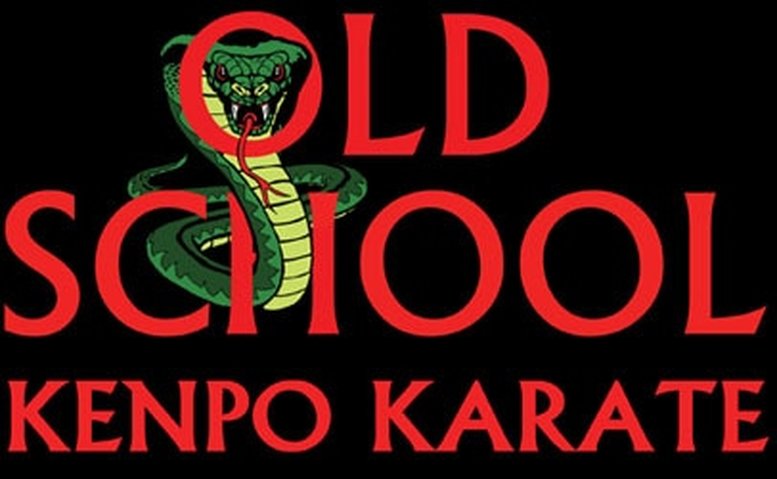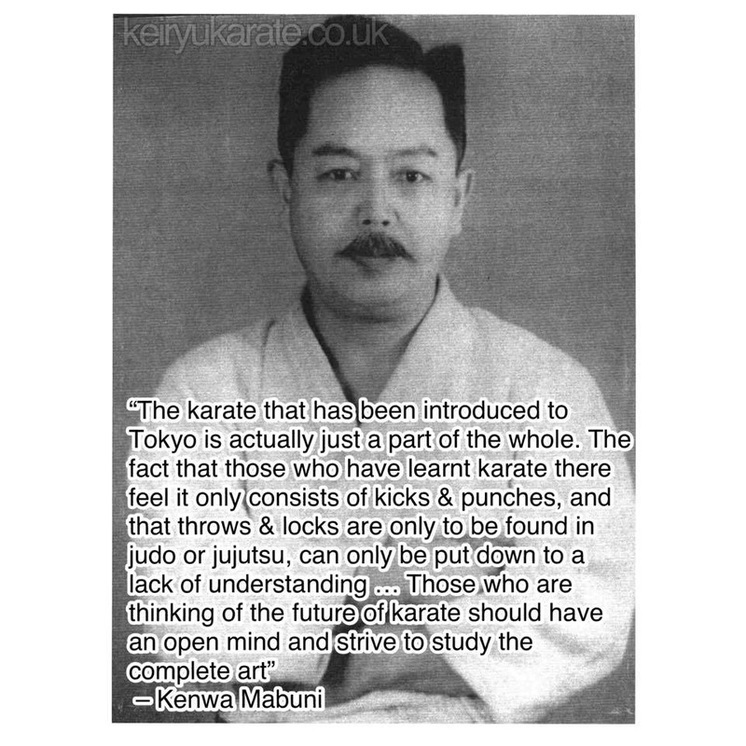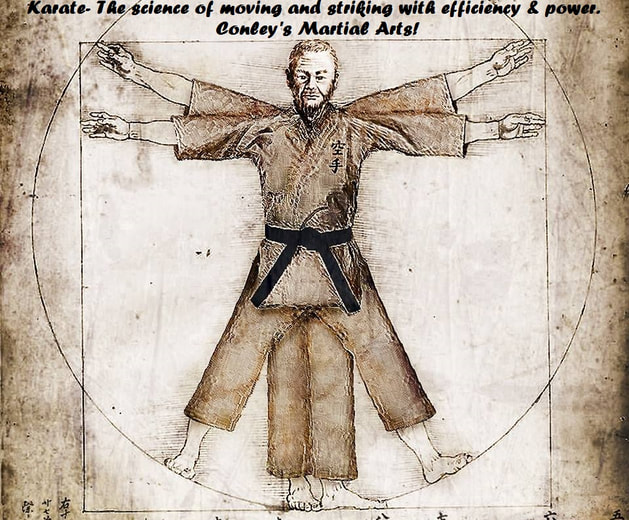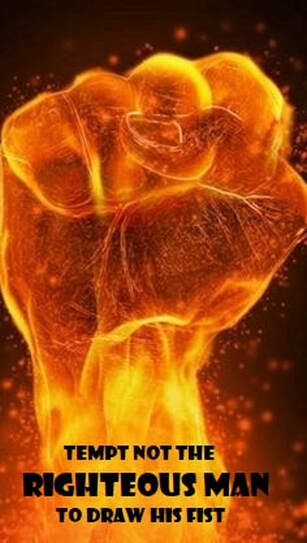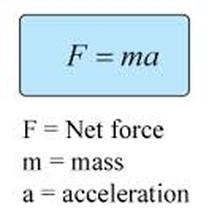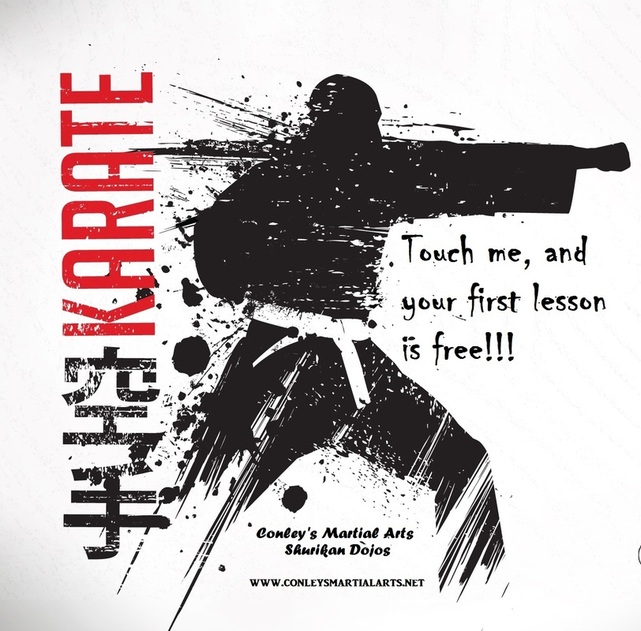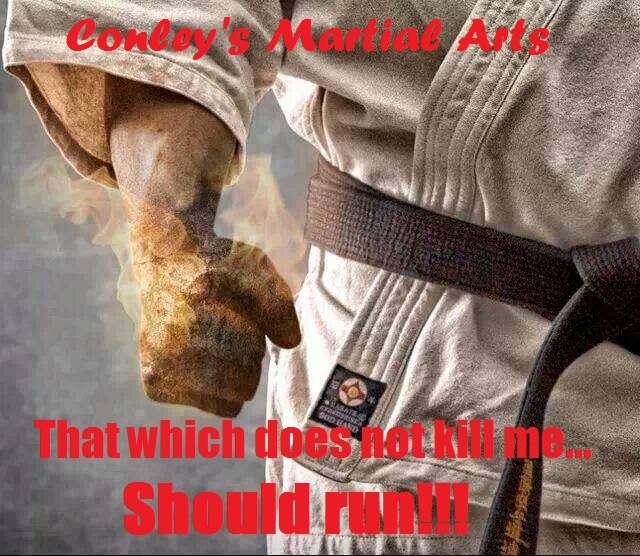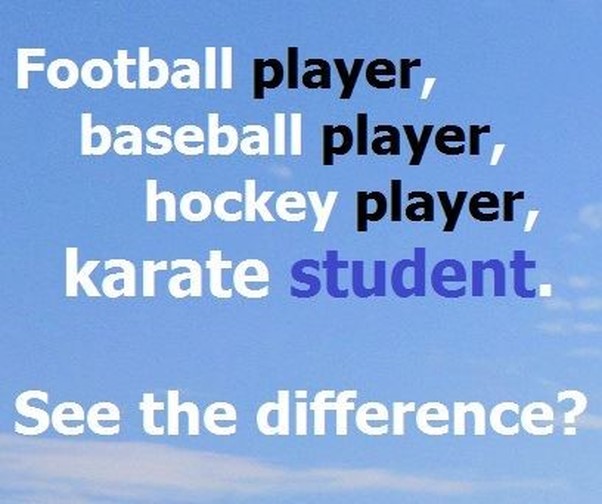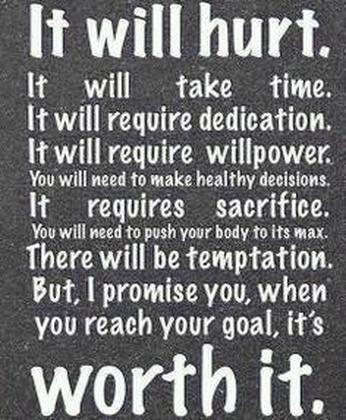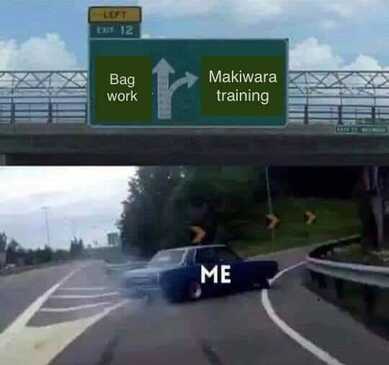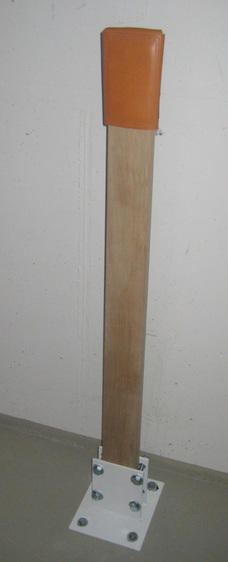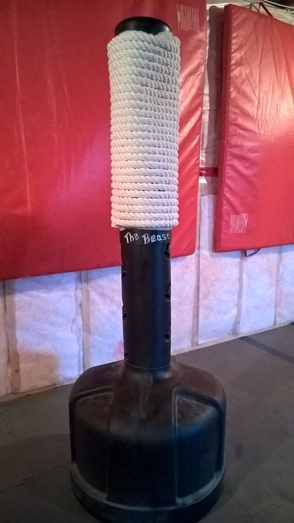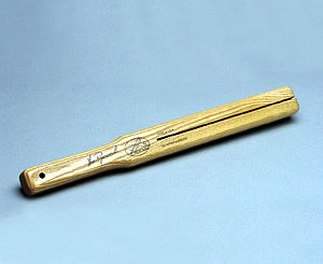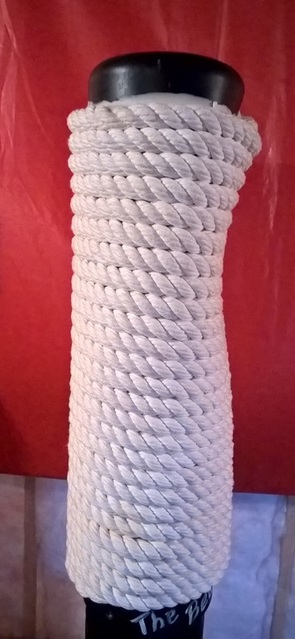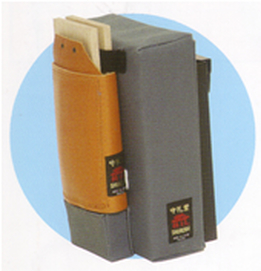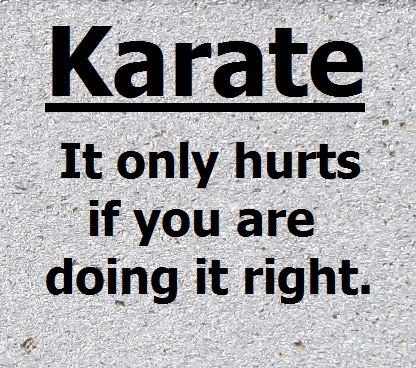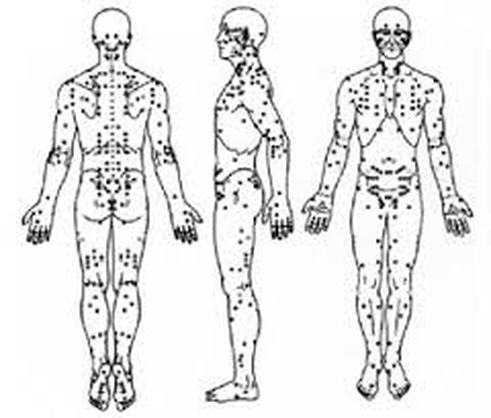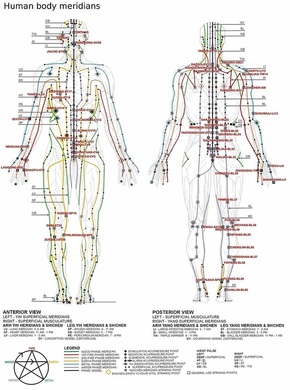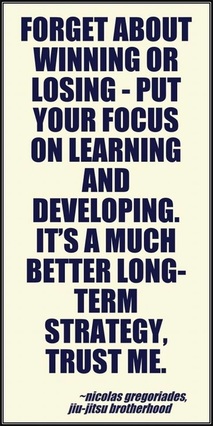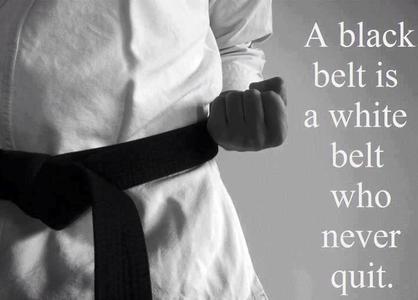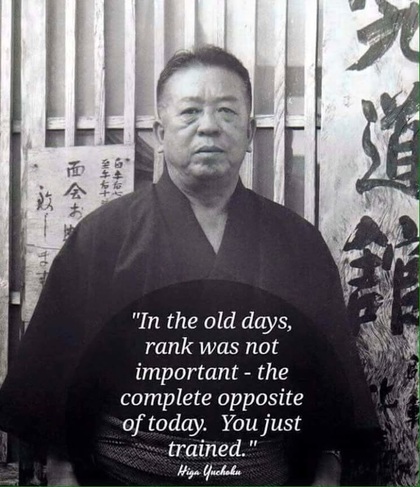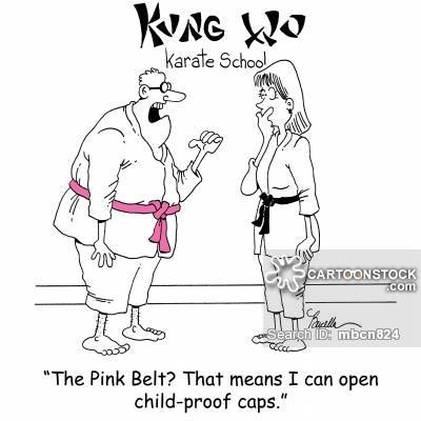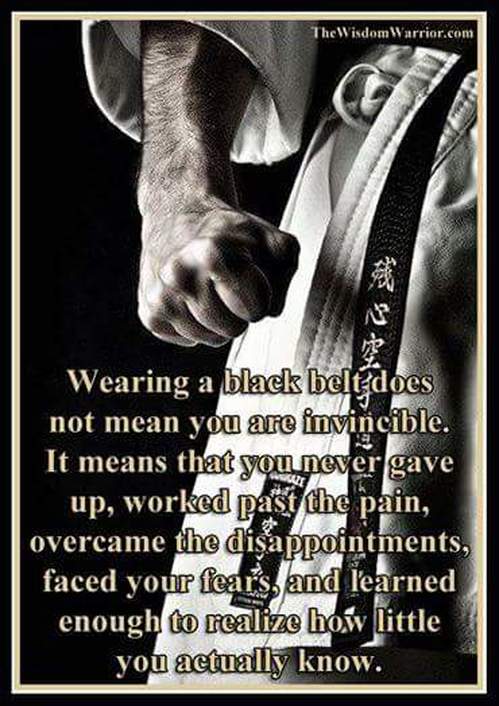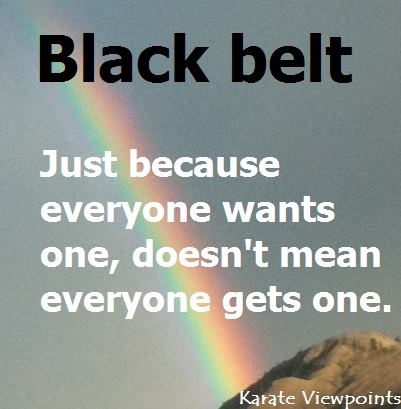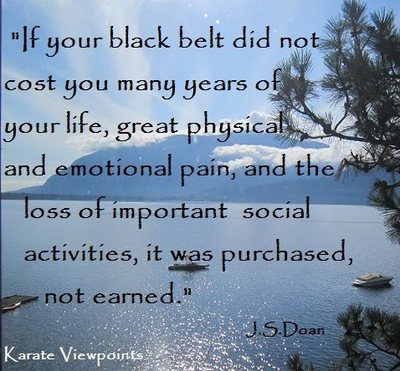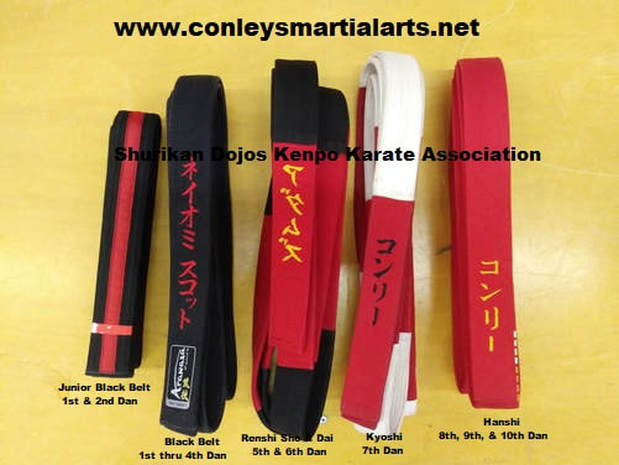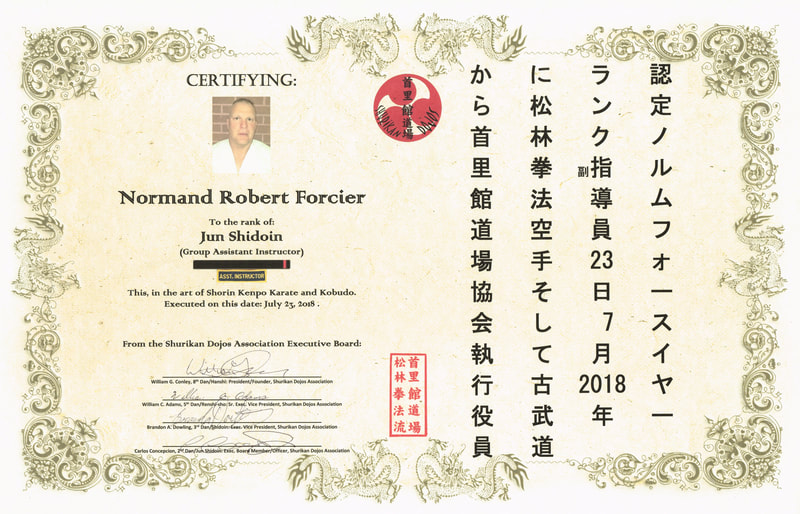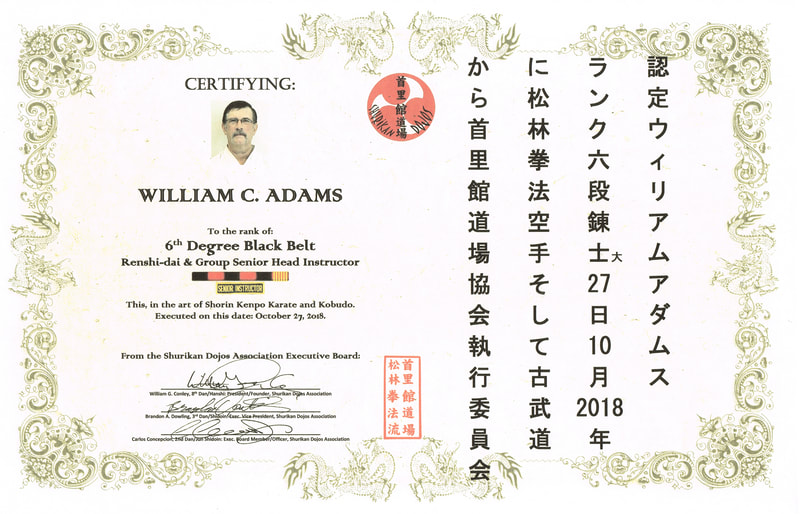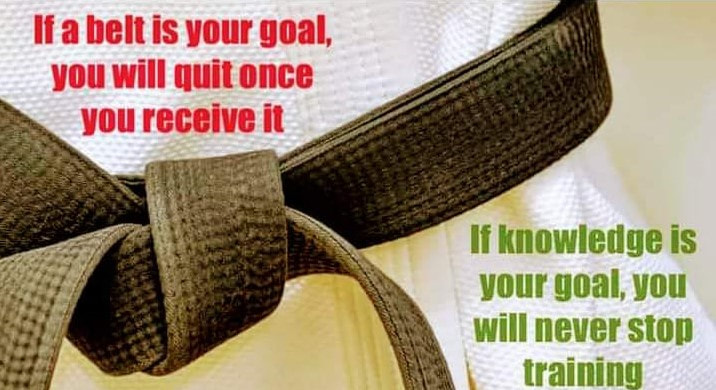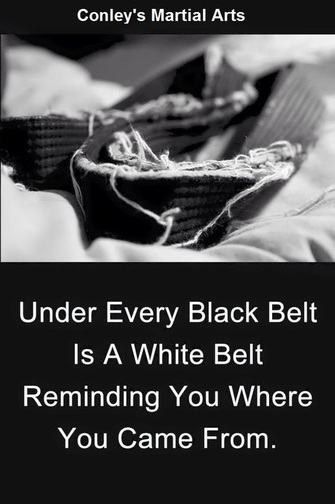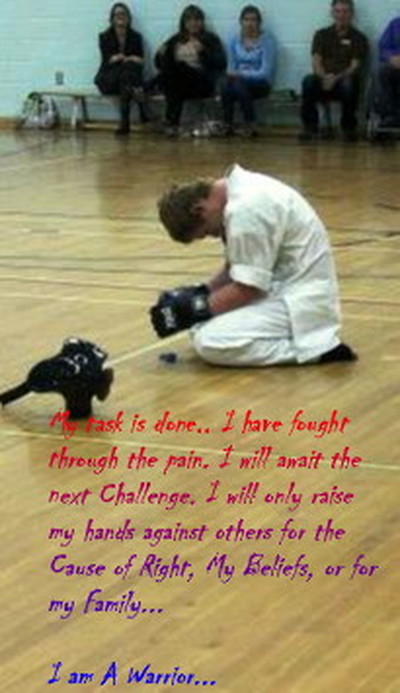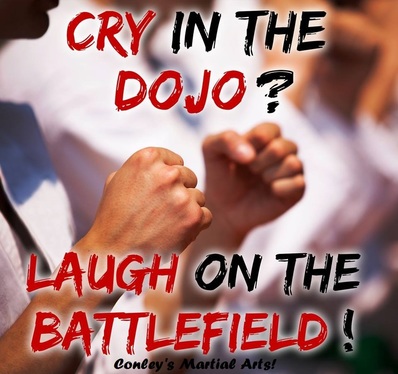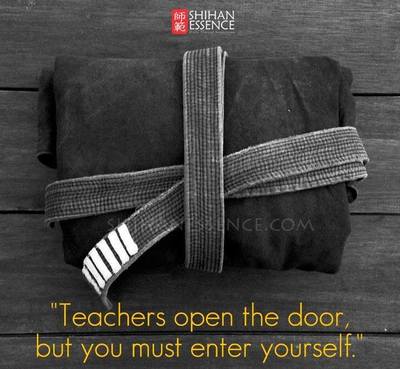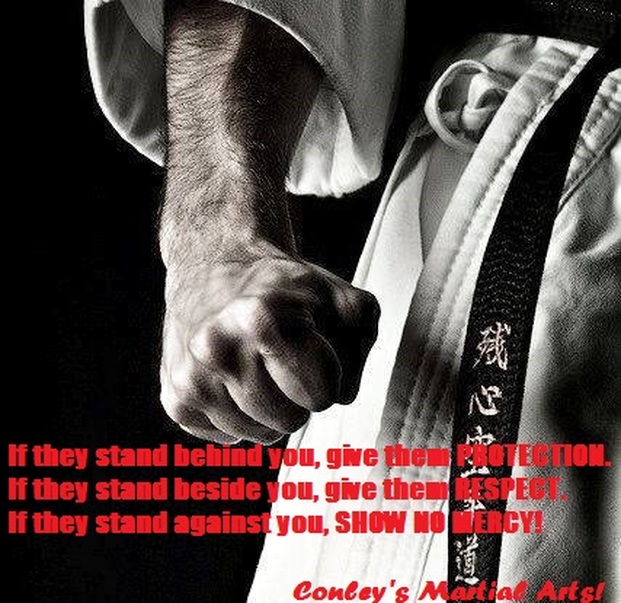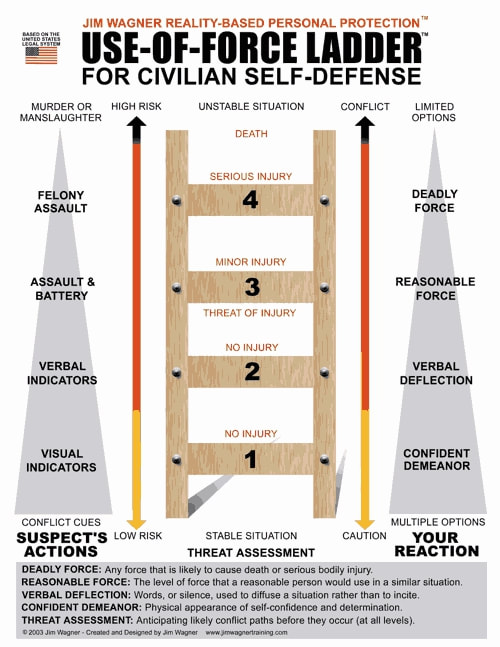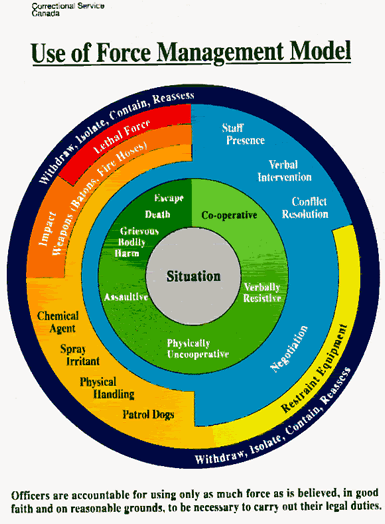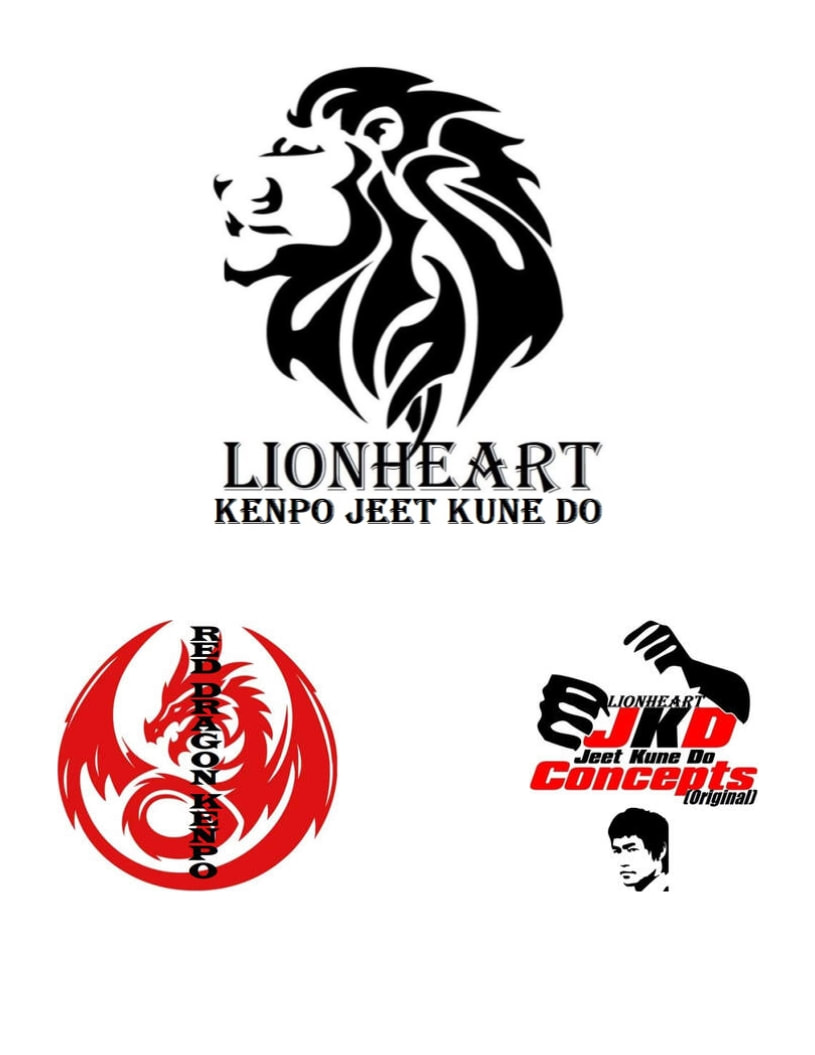SHURIKAN DOJOS association
Shurikan KENPO KARATE
Modern tactics thru kenpo karate
Self-Determination / Self-Discipline / Self-Defense
Shurikan Kenpo Karate presented by the Shurikan Dojos Organization has its core around Okinawan Kenpo Karate, (and portions of the old S.M.A.R.T. System which is now the LIONHEART [Private] Program), with concepts and contributions from Jeet Kune Do, Isshin Ryu Karate, Matsumura Seito Shorin Ryu, Matsubayashi Shorin Ryu Karate, and American Kenpo Karate. Sourced from Original, Traditional, Self-Defense Based systems.
From the above sources comes:
CMA Shurikan Kenpo Karate Promo 2018
Testimonial Video
SHURIKAN KENPO KARATE
Something we do NOT do: Charge high Tuition Fees or Graduated Test Fees!
Our tuition is competitive, lower, with any comparable martial arts outlet in New Brunswick or Maine! Our test fees do NOT go up as you move up the ranks! We have ONE very budget friendly test fee, for ALL ranks! It will not cost you hundreds, if not over a thousand dollars to reach Black Belt. Further, new students get the first month FREE! That is something else we ONLY offer!
BUT, with all that said, we require that you actually work for, and earn your rank! Appropriate and required attendance is required!
"Own it! Earn it!"
Our tuition is competitive, lower, with any comparable martial arts outlet in New Brunswick or Maine! Our test fees do NOT go up as you move up the ranks! We have ONE very budget friendly test fee, for ALL ranks! It will not cost you hundreds, if not over a thousand dollars to reach Black Belt. Further, new students get the first month FREE! That is something else we ONLY offer!
BUT, with all that said, we require that you actually work for, and earn your rank! Appropriate and required attendance is required!
"Own it! Earn it!"
"Strength without discipline is weakness."
A Discipline (too!)
Karate, you will hear frequently called a, "discipline." When you have discipline, you will also have commitment and soon to follow, dedication. This Karate program offered requires your discipline and commitment> meaning, in part, your appropriate attendance in the Dojo! Regarding Karate Kids' students, that same dedication must also come form their parents too! The kids don't have drivers licenses> they need you to get them to class, to support their training and progression! Students, or parents of students, frequently come into our Dojo with great expectation of progression and advancement. To those who do, make sure you understand it comes from hard work and participation. All the things already stated above! But remember, this art is NOT about acquiring rank!
If you have stopped training, we CANNOT call you karateka (karate student). As long as you are training, you are a karateka.
- Minoru Higa, 10th Dan, Kobayashi Shorin Ryu Karate
- Minoru Higa, 10th Dan, Kobayashi Shorin Ryu Karate
No Attendance... No Progression! NO PROMOTION!!!
Shuri Castle
Shurikan Dojos
Shurikan Kenpo Karate
CONLEY'S MARTIAL ARTS
SHURIKAN KENPO KARATE
STYLE SYLLABUS & RANKING SYSTEM
Shurikan Dojos : St Stephen-McAdam-St Andrews-Blacks Harbour, New Brunswick, and in Calais, Maine USA
The Greeting at the beginning of class, and the good bye at the end of class in the Dojo:
(Greeting): Konbanwa Hanshi, dozo onagai shimash'ta.
(Good evening Senior Teacher. please teach us.)
(Good bye): Sayonara Hanshi, domo arigato gozaimash'ta.
(Good bye Senior Teacher, thank you very much {for teaching us}.)
“Style and/or origin of technique become irrelevant when faced with a threatening target... Just hit it!” - Hanshi C
Terminology
Shurikan: Shurikan means: Place/Home of Shuri. Shuri referring to the ancient city of Shuri in Okinawa, and most importantly the location of Shuri Castle, where both were highly influential in Shuri-Te (and Tomari-Te) and soon to be Tote/Karate. Which eventually became Shorin Ryu.
Dojo: Training space for the practice or teaching of meditation and/or traditional martial arts' Literally, the term means, "place of the Way."
Te - Hand: The martial arts (open hand) practised by the Okinawans before China's introduction and influence. The Okinawan word for hand is, "Ti."
Tote - Chinese Hand: The name for the martial arts (open hand) practised in Okinawa which was greatly influenced by China. This was from the 14th to early 19th centuries, as during the early part of this time China and Okinawa had strong economic, social, and political ties.
Karate - Empty Hand: The name for the martial arts (open hand) practised in Okinawa after Japan incorporated it in to their country via Funakoshi and other Okinawa Yudansha.
Kenpo- Fist Law: Kenpo was the name given by the Okinawans for the martial arts practiced in China. The name was also used for some Okinawan martial arts in ancient times as well as even today.
Kenpō Bokushingu: Kenpo Boxing- is contact (Light, Moderate, or Heavy Contact) fighting, that takes on the characteristics of multiple, swift, circular-linked together striking of Kenpo. Just as in the same way, for examples, Taiji Boxing takes on the characteristics of Taiji, or Western Boxing having its own specific characteristics.
Kyusho/Tuite as it applies to Kata, Kenpo Speed Hitting, and Self- Defense: (*Kyusho>Pressure Points, Tuite>Joint Locks. The relationship between the two, is that one can set up the other. (The Chinese collectively call it, "Chin Na.")
Randdori: Freestyle
Sekkinsen: Close Quarter Fighting
Shurikan Kenpo Karate
CONLEY'S MARTIAL ARTS
SHURIKAN KENPO KARATE
STYLE SYLLABUS & RANKING SYSTEM
Shurikan Dojos : St Stephen-McAdam-St Andrews-Blacks Harbour, New Brunswick, and in Calais, Maine USA
The Greeting at the beginning of class, and the good bye at the end of class in the Dojo:
(Greeting): Konbanwa Hanshi, dozo onagai shimash'ta.
(Good evening Senior Teacher. please teach us.)
(Good bye): Sayonara Hanshi, domo arigato gozaimash'ta.
(Good bye Senior Teacher, thank you very much {for teaching us}.)
“Style and/or origin of technique become irrelevant when faced with a threatening target... Just hit it!” - Hanshi C
Terminology
Shurikan: Shurikan means: Place/Home of Shuri. Shuri referring to the ancient city of Shuri in Okinawa, and most importantly the location of Shuri Castle, where both were highly influential in Shuri-Te (and Tomari-Te) and soon to be Tote/Karate. Which eventually became Shorin Ryu.
Dojo: Training space for the practice or teaching of meditation and/or traditional martial arts' Literally, the term means, "place of the Way."
Te - Hand: The martial arts (open hand) practised by the Okinawans before China's introduction and influence. The Okinawan word for hand is, "Ti."
Tote - Chinese Hand: The name for the martial arts (open hand) practised in Okinawa which was greatly influenced by China. This was from the 14th to early 19th centuries, as during the early part of this time China and Okinawa had strong economic, social, and political ties.
Karate - Empty Hand: The name for the martial arts (open hand) practised in Okinawa after Japan incorporated it in to their country via Funakoshi and other Okinawa Yudansha.
Kenpo- Fist Law: Kenpo was the name given by the Okinawans for the martial arts practiced in China. The name was also used for some Okinawan martial arts in ancient times as well as even today.
Kenpō Bokushingu: Kenpo Boxing- is contact (Light, Moderate, or Heavy Contact) fighting, that takes on the characteristics of multiple, swift, circular-linked together striking of Kenpo. Just as in the same way, for examples, Taiji Boxing takes on the characteristics of Taiji, or Western Boxing having its own specific characteristics.
Kyusho/Tuite as it applies to Kata, Kenpo Speed Hitting, and Self- Defense: (*Kyusho>Pressure Points, Tuite>Joint Locks. The relationship between the two, is that one can set up the other. (The Chinese collectively call it, "Chin Na.")
Randdori: Freestyle
Sekkinsen: Close Quarter Fighting
*Kata & Formal Exercises:
|
Junior
White Crane Exercise 1 & 2 Hakutsuru Sho White Crane Exercise 3 Kenpo 1 Shoshin Kenpo 2 Naihanchi Kenpo 3 Ryuto Sanchin Sho
Kenpo 4 Wankan Kenpo 5 Wanshu Kenpo 5 |
Belt Rank
White Belt Yellow Belt Orange Belt Green Belt Blue Belt Purple Belt Brown Belt Black Belt (1st Dan) |
Adult
White Crane Exercise 1 & 2
Hakutsuru Sho White Crane Exercise 3
Shoshin Naihanchi
Kenpo 1 Chojun
Kenpo 2 Ananku Naihanchi Omote
Kenpo 3 Ryuto Sanchin Sho Kenpo 4 Wankan Kenpo 5 Wanshu Kenpo Jōkyū Rohai |
Kata throughout Black Belt Dan Levels:
Passai
Ryuto Sanchin Dai
Gojushiho
Chinto (Matsubayashi Ryu)
Kusanku
Ryuto Sanchin Dai
Gojushiho
Chinto (Matsubayashi Ryu)
Kusanku
Supplemental Kata
(That may be added at a later date to appropriate ranks)
Shiho Hai (Chito Ryu)
Seisan (Isshin Ryu)
Chinto (Chito Ryu)
Rohai Dai (Chito Ryu)
Hakutsuru No Kenpo (Okinawa Kenpo)
Osama Tsuru Kata (Okinawa Kenpo)
(That may be added at a later date to appropriate ranks)
Shiho Hai (Chito Ryu)
Seisan (Isshin Ryu)
Chinto (Chito Ryu)
Rohai Dai (Chito Ryu)
Hakutsuru No Kenpo (Okinawa Kenpo)
Osama Tsuru Kata (Okinawa Kenpo)
*Note: Throughout the progression through the ADULT ranks, the LIONHEART (Formerly S.M.A.R.T.) System is somewhat integrated in the general curriculum that will be an equally required element(s) for rank promotion. Additionally, also progressively added throughout the ADULT curriculum, will be Tactical Knife DEFENSE Training and Escrima/Filipino Stick Fighting.
It is also in the works to try and bring in, supplemental, a Grappling Program. That, once a way of acquiring mats for said new program.
Kata (a few) Gallery
Kata: Hakutsuru Sho
The White crane (Hakutsuru) kata(s) presented here are representative of both Naha-Te (Hard) and Shuri-Te (Soft) styles of Okinawa Karate. The White Crane kata are Mountain (Yama) Crane Kata and are Naha/hard style (Chinese reference it as Hard Qi Gong). The Matsumura kata is Shuri/soft style (Chinese reference it as Soft Qi Gong).
A little history, click below:
Kenpo means, "Fist Law." Kenpo was the name given by the Okinawans for the martial arts practiced in China. The name was also used for some Okinawan martial arts in ancient times as well as even today. In the late 14th century, the King of Okinawa developed diplomatic, economic, and cultural ties with the Emperor of China. The Emperor of China, as a gesture of friendship, sent a group different artisans to Okinawa. Some of those artisans were martial artists. These Chinese martial artists taught the Okinawans primarily White Crane. The Okinawans had a fighting system already, Te meaning Hand, but it was a mix of things learned from visiting sailors and outsiders. The Okinawans called their new system, "Tote." Which meant Chinese Hand. Kenpo, in the way we present it, is about the techniques/strikes and combinations. The ammunition for your Kata analysis. And there are Kenpo systems (Like Late Master Parker's) that have their own Kata, but in our program we utilize the combination striking, flow, and accuracy of Kenpo and how so much of these strikes and combos can be seen in all Okinawan Karate Kata (as that was how it influenced me). I first discovered and became fascinated with (Parker's) Kenpo when having the opportunity to see and train with some of Parker's high ranking black belts, and others in similar systems: J Tourrette, T Cogliandro , & A Mason. One thing I found with American Kenpo, is its complex matrix of techniques and combinations. The Kenpo approach and interpretation I take and present is a more simplified one. I do so utilizing the the applications in our Kata with a Kenpo approach.
What is most important in Kenpo> ALL martial arts, in my humble opinion is: That you must utilize Line of Sight Striking!
Most Karate today> even the so called Traditional Okinawan Karate, still has, and has been influenced by mainland Japan. It is the systems that have what I call, "The martial arts domain name of Kenpo," that has maintained the whipping, circular flow, with more rapid combinations: Kenpo Karate, Kenpo Jitsu, Chinese Kenpo, or just Kenpo. These are the systems that have stayed with what was Karate, or Tote (Kenpo) of old. Yet, in almost all Okinawan Karate systems I could see elements of Kenpo, even the whipping, especially in Shihan/Hanshi level practitioners. The Kata(s) of Kenpo presented by CMA is quite different from the Isshin/Matasubayashi Kata(s) presented by CMA. Kenpo Kata display multiple, swift combinations of techniques. There are five (5) formal exercises (we utilize six) and following those the Kata called, Jōkyū. Jōkyū means, Advanced. Jōkyū features over one hundred strikes (118) in fourteen steps!
Kenpo parallel axiom:
"The art of war (combat) is simple enough. Find out where your enemy is (his vulnerabilities). Get at him as soon as you can. Strike him as hard as you can and as often as you can, and keep moving..."
- U.S. Union Commanding General Ulysses S. Grant
What is most important in Kenpo> ALL martial arts, in my humble opinion is: That you must utilize Line of Sight Striking!
Most Karate today> even the so called Traditional Okinawan Karate, still has, and has been influenced by mainland Japan. It is the systems that have what I call, "The martial arts domain name of Kenpo," that has maintained the whipping, circular flow, with more rapid combinations: Kenpo Karate, Kenpo Jitsu, Chinese Kenpo, or just Kenpo. These are the systems that have stayed with what was Karate, or Tote (Kenpo) of old. Yet, in almost all Okinawan Karate systems I could see elements of Kenpo, even the whipping, especially in Shihan/Hanshi level practitioners. The Kata(s) of Kenpo presented by CMA is quite different from the Isshin/Matasubayashi Kata(s) presented by CMA. Kenpo Kata display multiple, swift combinations of techniques. There are five (5) formal exercises (we utilize six) and following those the Kata called, Jōkyū. Jōkyū means, Advanced. Jōkyū features over one hundred strikes (118) in fourteen steps!
Kenpo parallel axiom:
"The art of war (combat) is simple enough. Find out where your enemy is (his vulnerabilities). Get at him as soon as you can. Strike him as hard as you can and as often as you can, and keep moving..."
- U.S. Union Commanding General Ulysses S. Grant
Understanding your Kata(s) through the eyes and interpretations of Kenpo, so you can apply it to Close Quarter Fighting!
Analytics (of your Kata)
The Analytics, analysis, of each of your Kata is quite essential in your Karate progression. I have seen throughout my years of training, many who have reached black belt, 1st, 2nd, or 3rd Dan> God some higher, and they seem to hit a wall. Lose interest... I've heard some say, they aren't "getting anything out of their art anymore..." Equally, I have heard some, from other arts (modern), or in an art but really not fully understanding their given art, or those not in any art, say that, "You can't learn how to fight effectively/practically from Kata> any Kata."
The Analytics, analysis, of each of your Kata is quite essential in your Karate progression. I have seen throughout my years of training, many who have reached black belt, 1st, 2nd, or 3rd Dan> God some higher, and they seem to hit a wall. Lose interest... I've heard some say, they aren't "getting anything out of their art anymore..." Equally, I have heard some, from other arts (modern), or in an art but really not fully understanding their given art, or those not in any art, say that, "You can't learn how to fight effectively/practically from Kata> any Kata."
I frequently tell my students in both systems I teach (Karate & Tai Chi), not to take their forms (in Karate called Kata) so literally! Equally I say that Kata as seen normally in the Dojo does not teach you how to fight or adequately defend yourself. Wait a minute your thinking, what?! Let me explain. Kata, as a whole, seen in the Dojo (along with your floor work> Kihon techniques) is designed to strengthen your body, better your accuracy, refine your balance, flexibility, etc. When you can better your movements in your Kata, you better your movements outside of Kata. Kata, that which you practice in your Dojo, are made up of what I call, "filler techniques and signature techniques/postures." When you take the "signature parts" out of it and compress them into short, close quarter combat combination drills (where the real conflict(s) exists)> then you have the true self-defense aspect of your Kata!!! Once you have multiple drills, you can then mix and match! Take it to the next step. Randori/Freestyle! This all becomes what is called Sekkin-sen/Close Combat. And there becomes reality!
Speed and Power- Can you have them both at the same time?
Fair and good question. My answer is... No.
It is from my experience that the body mechanics for Speed and/or Power are different. To back that up, just look at martial systems today. Those that emphasize Power, tend to have longer stances. Those opting for Speed, the reverse is seen to be true. Which would suggest the mechanics of initiating each, Speed or Power, will be different. Traditional Karate that we see today (i.e. Isshin Ryu, Shorin Ryu, Goju Ryu, Ueichi Ryu, Shotokan, Kyokushin, etc) is based on Power. If someone says it is based on Speed, they are fooling themselves and you. Just look at any of their Kata. You can virtually count say, One Thousand One in the time it takes to do two strikes, contiguous, in said traditional Kata. That is NOT an adequate, nor acceptable example or deployment for Speed. In our system of White Crane Kenpo, and also American Kenpo or Kosho Ryu Kenpo, in the time it takes to say, One Thousand One, you will have struck six or more times! Get it? Likewise, in Kenpo, the strikes tend not to contain immense Power. Instead the frequency of strikes functions like the saying: Death by a thousand cuts. To strike with Power you need good body alignment, ground connection, and understand Koshi. Whole body energy and posture commitment are requirements. In our Shurikan Dojos, the Isshin/Matsubayashi is the source for Power, and our Kenpo (White Crane Kenpo w/American Kenpo concepts) is the source for Speed.
In a nutshell; Use Speed when you need it. Use Power when you need it. It's that simple.
- Hanshi C
It is from my experience that the body mechanics for Speed and/or Power are different. To back that up, just look at martial systems today. Those that emphasize Power, tend to have longer stances. Those opting for Speed, the reverse is seen to be true. Which would suggest the mechanics of initiating each, Speed or Power, will be different. Traditional Karate that we see today (i.e. Isshin Ryu, Shorin Ryu, Goju Ryu, Ueichi Ryu, Shotokan, Kyokushin, etc) is based on Power. If someone says it is based on Speed, they are fooling themselves and you. Just look at any of their Kata. You can virtually count say, One Thousand One in the time it takes to do two strikes, contiguous, in said traditional Kata. That is NOT an adequate, nor acceptable example or deployment for Speed. In our system of White Crane Kenpo, and also American Kenpo or Kosho Ryu Kenpo, in the time it takes to say, One Thousand One, you will have struck six or more times! Get it? Likewise, in Kenpo, the strikes tend not to contain immense Power. Instead the frequency of strikes functions like the saying: Death by a thousand cuts. To strike with Power you need good body alignment, ground connection, and understand Koshi. Whole body energy and posture commitment are requirements. In our Shurikan Dojos, the Isshin/Matsubayashi is the source for Power, and our Kenpo (White Crane Kenpo w/American Kenpo concepts) is the source for Speed.
In a nutshell; Use Speed when you need it. Use Power when you need it. It's that simple.
- Hanshi C
Be a Whip, not a Stick!!!
The movements of Kenpo is that of a whip!
The movements of Kenpo is that of a whip!
Any of my students will tell you that I constantly say, "Be a whip, not a stick!" I say it all the time! Don't be stiff when you strike, be relaxed. Hit with your structure (Back to that again!). Kenpo, and its signature code, can give Karate flow and coordinated movement. It is from that, that Sekkin-sen is derived. A signature method of this art/system (Kenpo), is in the striking (arm & leg techniques), blocking, and even stepping> ALL movement: A whip action is done to a very high degree! And so, in our system of Karate, it is the Kenpo that gives it the whipping action and interpretation. Regarding this whip action, one should give this great thought and consideration. And if you did indeed have a real whip in your hand, consider and process how you would initiate the action. When properly using said whip. And as stated earlier on this page: When you can better your movements in your Kata, you better your movements outside of Kata. To achieve this, your movements must be like a whip! And said movements can be very internalized too.
The Shurikan Kenpo Karate Punch and Blocking Methodologies
Hanshi Conley derived his system of Karate, the Shurikan Dojos method, from the styles of Karate that he trained in for over 40 years past. They were, the systems that most influences and is the source codes for Shurikan Kenpo are: Jeet June Do, Isshin Ryu, Matsumura Seito Shorin Ryu, Matsubayashi Shorin Ryu, and American Kenpo.
The Shurikan Kenpo Karate punch is unique one when first seen. Almost all Karate systems, for that matter many other martial arts systems, all utilize a horizontal fist. We utilize in the Shurikan Kenpo method is a vertical fist. And the fist is structured formed from Isshin Ryu. However, unlike Isshin Ryu and its vertical fist as well as the other systems that utilize a horizontal fist, they all power their punch with their tricep muscles. When you use your tricepos as a catalyst for your punch, you tend to swat when you execute the punch. In Shurikan Kenpo we do not utilize the tricep muscle to power the punch. We utilize from Chinese martial arts philosophy, from the six harmonies, one of the harmonies, the elbows. We power the punch through the elbows. More appropriately the frontal area of the elbow and the upper forearm powers the punch. this fashion and action of punching, you will hit with whole body power. Without proper demonstration it is quite hard to explain. The fist is chambered at the hip similar to Isshin Ryu. Unlike Isshin Ryu the Shurikan method of blocking utilizes what's called: Vector Blocking. Which is different from all the other systems mentioned here earlier from Hanshi Conley's training experience.
The Shurikan Kenpo Karate punch is unique one when first seen. Almost all Karate systems, for that matter many other martial arts systems, all utilize a horizontal fist. We utilize in the Shurikan Kenpo method is a vertical fist. And the fist is structured formed from Isshin Ryu. However, unlike Isshin Ryu and its vertical fist as well as the other systems that utilize a horizontal fist, they all power their punch with their tricep muscles. When you use your tricepos as a catalyst for your punch, you tend to swat when you execute the punch. In Shurikan Kenpo we do not utilize the tricep muscle to power the punch. We utilize from Chinese martial arts philosophy, from the six harmonies, one of the harmonies, the elbows. We power the punch through the elbows. More appropriately the frontal area of the elbow and the upper forearm powers the punch. this fashion and action of punching, you will hit with whole body power. Without proper demonstration it is quite hard to explain. The fist is chambered at the hip similar to Isshin Ryu. Unlike Isshin Ryu the Shurikan method of blocking utilizes what's called: Vector Blocking. Which is different from all the other systems mentioned here earlier from Hanshi Conley's training experience.
Sekkin-sen 接近戦 (Close Combat/Fighting)
Close Combat/Fighting/Sekkin-sen, some call it Kakie, is a direct result of CORRECT Kata Analysis. Most what is termed as, "self-defense techniques," by the majority of Karate systems/Dojos today, is really long range, "in the dojo" type fighting techniques. And it only works in the Dojo, so leave it there, in the Dojo. Therein lies the problem. Dojo sparring never represents what a violent altercation will be like, and it will fail against said altercation! I say this coming from my years of experience in the entertainment industry security, specifically licensed events, and from my law enforcement background.
The true range between you and your opponent, in a real life threatening situation, is 30cm/1 foot> or less! Anything more than 30cm/1ft is S-P-A-R-R-I-N-G!!! Sparring is something you do in the Dojo, gym, studio, wherever> but all under a structured, with rules, format. Something that does not represent real conflict, in the real world!
Reiterating: To effectively defend yourself against an assault, you must know Close Combat! I define close combat as 30cm/1 foot or less away from your opponent. Most Karate "self-defense" techniques I have seen over the years require a distance much greater than 30cm/1 foot. Even if a fight/violent altercation starts from long range, someone in that exchange always> always bridges the gap, and it gets up close and personal! Let me repeat: True self-defense will be 30cm/1foot or less away from your opponent! Don't> DON'T, fool yourself thinking it will be more! To think, or do otherwise, will get you hurt or killed!
The drills and techniques are presented in a simplified form> as any complex movement can be not only hard and longer to learn, but in a real life threat situation it may not be useful because it was simply too difficult to retain. The twp person drills and the more defined, intricate parts of Sekkin-sen are reserved for Brown & Black belts. Through the floor work, for student levels Sekkin-sen/Kata analysis show what some of the moves in the katas are, and do it without the drills, but just mixed in with floor work> kicks, punches, etc.
Kata contains Filler Techniques and Signature Techniques or Signature Postures. The term Signature Postures will be defined and introduced. Signature Postures in Kata, when analyzed, are the blueprints to close fighting. These techniques are also the building blocks to Speed Hitting. Much of the techniques and analytics I use to interpret Kata comes from Kenpo.
The techniques of Sekkin-sen are only designed to represent just another way to deal with a very close quarter opponent. And how to strike frequently, in rhythm. It is certainly not an end all. It can also help to create some distance from someone attacking close, because if you get the movements down, they can overwhelm for a short time allowing you to get distance. Also, the striking, especially the open hand stuff, and as much as possible the other stuff too, should be striking vital areas, especially and the majority to the opponent's neck. And when practicing or demonstrating with a training partner, it would look like just slapping, but simply you do not put the energy in the partner's body and don't strike their neck/throat, obviously. And many times when practicing with a training partner, instead of targeting near the throat it's best to drop the targeting down across the collarbone/upper chest area, where in real life it would have been the throat/neck.
Close Combat/Fighting/Sekkin-sen, some call it Kakie, is a direct result of CORRECT Kata Analysis. Most what is termed as, "self-defense techniques," by the majority of Karate systems/Dojos today, is really long range, "in the dojo" type fighting techniques. And it only works in the Dojo, so leave it there, in the Dojo. Therein lies the problem. Dojo sparring never represents what a violent altercation will be like, and it will fail against said altercation! I say this coming from my years of experience in the entertainment industry security, specifically licensed events, and from my law enforcement background.
The true range between you and your opponent, in a real life threatening situation, is 30cm/1 foot> or less! Anything more than 30cm/1ft is S-P-A-R-R-I-N-G!!! Sparring is something you do in the Dojo, gym, studio, wherever> but all under a structured, with rules, format. Something that does not represent real conflict, in the real world!
Reiterating: To effectively defend yourself against an assault, you must know Close Combat! I define close combat as 30cm/1 foot or less away from your opponent. Most Karate "self-defense" techniques I have seen over the years require a distance much greater than 30cm/1 foot. Even if a fight/violent altercation starts from long range, someone in that exchange always> always bridges the gap, and it gets up close and personal! Let me repeat: True self-defense will be 30cm/1foot or less away from your opponent! Don't> DON'T, fool yourself thinking it will be more! To think, or do otherwise, will get you hurt or killed!
The drills and techniques are presented in a simplified form> as any complex movement can be not only hard and longer to learn, but in a real life threat situation it may not be useful because it was simply too difficult to retain. The twp person drills and the more defined, intricate parts of Sekkin-sen are reserved for Brown & Black belts. Through the floor work, for student levels Sekkin-sen/Kata analysis show what some of the moves in the katas are, and do it without the drills, but just mixed in with floor work> kicks, punches, etc.
Kata contains Filler Techniques and Signature Techniques or Signature Postures. The term Signature Postures will be defined and introduced. Signature Postures in Kata, when analyzed, are the blueprints to close fighting. These techniques are also the building blocks to Speed Hitting. Much of the techniques and analytics I use to interpret Kata comes from Kenpo.
The techniques of Sekkin-sen are only designed to represent just another way to deal with a very close quarter opponent. And how to strike frequently, in rhythm. It is certainly not an end all. It can also help to create some distance from someone attacking close, because if you get the movements down, they can overwhelm for a short time allowing you to get distance. Also, the striking, especially the open hand stuff, and as much as possible the other stuff too, should be striking vital areas, especially and the majority to the opponent's neck. And when practicing or demonstrating with a training partner, it would look like just slapping, but simply you do not put the energy in the partner's body and don't strike their neck/throat, obviously. And many times when practicing with a training partner, instead of targeting near the throat it's best to drop the targeting down across the collarbone/upper chest area, where in real life it would have been the throat/neck.
Elements of Kenpo:
*Kenpo Speed Hitting (Kenposupīdo dageki) and Line of Sight Striking!
*Kenpo Boxing (Kenpō bokushingu)
Kenpo Boxing is contact (Light, Moderate, or Heavy Contact) fighting, that takes on the characteristics of multiple, swift, circular-linked together striking of Kenpo. Just as in the same way, for examples, Taiji Boxing takes on the characteristics of Taiji, or Western Boxing having its own specific characteristics. Kenpo Boxing: The difference from other boxing, is Kenpo boxing includes chops, palm strikes, and hammer fists with punches. And SPEED is a defining attribute.
*Also see the the S.M.A.R.T. page on this website, and go to Gunfighter 101 to see more.
*Also see the the S.M.A.R.T. page on this website, and go to Gunfighter 101 to see more.
Sekkin-sen/Close Combat/Fighting taught at the Shurikan Dojos come directly from our Kata(s), along with the over/under drills, forearm striking, and Kyusho (Pressure Points) & Tuite (Joint Manipulation/Control)...
"The harder you work, the harder it is to surrender."
- Vince Lombardi
"The harder you work, the harder it is to surrender."
- Vince Lombardi
CMA Dojos presents Okinawan style of Karate. Karate originates from Okinawa!!! To see a great explanation on the differences between Okinawan & Japanese Karate click here: Okinawa Karate. Much of Okinawan White Crane Kenpo Karate is based on "Dead Angle" fighting, and evasive footwork, controls/grabs, and followed by swift counter attack(s). Grappling techniques can also be employed. These are direct characteristics of White Crane Kung Fu!!! Also, White Crane, utilizes fast, flowing, frequent, and accurate striking. Which is different from Mainland Japan Karate's: Ikken Hissatsu> One Strike - One Kill, though in the modern Karate world they translate it as, One Punch - One LIfe. Ikken Hissatsu finds its origin, and that way of thinking, from the Samurai Era. When with one cut of a Katana it was a death stroke to the opponent. Japanese society, even throughout its modern history, will frequently tap into that Samurai Ethos, even if it is not conventional or practical to do so! The One Punch - One Life is definitely in that line of the unconventional. I, in my over 40yrs of martial arts practice, can count on one hand the practitioners that I believe could actually do a One Punch - One Life. Which leaves the rest of us with needing different ways of addressing a serious (if not life threatening) situation.
I have always felt Okinawa Martial Arts is the transitional bridge between Chinese and Japanese (Mainland) Martial Arts. Take the Bo staff as an example. Chinese staff techniques are very flamboyant, flowing, and dynamic> more designed for speed. Japanese staff techniques tend to be more rigid, blocked out, and more linear in movement> more designed for power. Okinawa staff techniques have aspects of both Chinese and Japanese elements mentioned. Similarly, one can see the same with open hand systems of each of the three cultures.
- Hanshi C
I have always felt Okinawa Martial Arts is the transitional bridge between Chinese and Japanese (Mainland) Martial Arts. Take the Bo staff as an example. Chinese staff techniques are very flamboyant, flowing, and dynamic> more designed for speed. Japanese staff techniques tend to be more rigid, blocked out, and more linear in movement> more designed for power. Okinawa staff techniques have aspects of both Chinese and Japanese elements mentioned. Similarly, one can see the same with open hand systems of each of the three cultures.
- Hanshi C
The Physics:
Think Acceleration, not Speed! (The following are my own interpretations, though others may have similar and/or near to parallel representations.)
Even if you have all principles I just mentioned above, there is still a major element that, I feel and have seen, most Karate practitioners miss when punching> and it applies to kicking, blocking, striking of any kind> everything!. Most practitioners translate their actions (striking) into Speed. Here and to follow, I will use the term Speed, though I could equally use the term Velocity too. And in any mention of Speed here, you may replace it with Velocity if you want, as the applications in this, my dissertation are the same for Speed and/or Velocity.
I have postulated throughout this website that Physics plays a very large role in the understanding and execution of ALL martial arts. So, through Physics, here are the definitions for Speed and Velocity:
Speed- The rate or a measure of the rate of motion of an object.
Velocity- Is a vector quantity that refers to "the rate at which an object changes its position." As such, Velocity is direction aware. Whereas, for the most part, Speed is direction ignorant.
People in the martial arts, in a general sense, all want to be... Fast! However, there is no Physics definition for the term, Fast... Oh yes, Webster's has one, but no definition for it in Physics. Therein lies the first mistake made by most, to seek to be something, Fast, that has no recognition or existence in science! Ask most anyone what it is to be Fast, and they will come strikingly (no pun intended) close to the definition of Speed, or Velocity. Why? Because you can't define something thru Physics, that has no definition. The vast majority of martial practitioners tend to see their actions through the field glasses of Speed. Speed will infer a constant rate of motion. Constant rate of motion of an object, say your fist, is not what you want to effect the best punch. So, before I go any further, let me state what it is you need... Acceleration!
Acceleration- A vector quantity that tends to produce an acceleration of a body in the direction of its application. Newton's Second Law of Motion states that a free
body accelerates in the direction of the applied force and that its acceleration is directly proportional to the force and inversely proportional to its mass.
Rate of change in velocity, measured in feet (meters) per second per second (ft(m)/sec2). Ah yes, Newton's Second Law of Motion. We all know it, right?!
Even if you have all principles I just mentioned above, there is still a major element that, I feel and have seen, most Karate practitioners miss when punching> and it applies to kicking, blocking, striking of any kind> everything!. Most practitioners translate their actions (striking) into Speed. Here and to follow, I will use the term Speed, though I could equally use the term Velocity too. And in any mention of Speed here, you may replace it with Velocity if you want, as the applications in this, my dissertation are the same for Speed and/or Velocity.
I have postulated throughout this website that Physics plays a very large role in the understanding and execution of ALL martial arts. So, through Physics, here are the definitions for Speed and Velocity:
Speed- The rate or a measure of the rate of motion of an object.
Velocity- Is a vector quantity that refers to "the rate at which an object changes its position." As such, Velocity is direction aware. Whereas, for the most part, Speed is direction ignorant.
People in the martial arts, in a general sense, all want to be... Fast! However, there is no Physics definition for the term, Fast... Oh yes, Webster's has one, but no definition for it in Physics. Therein lies the first mistake made by most, to seek to be something, Fast, that has no recognition or existence in science! Ask most anyone what it is to be Fast, and they will come strikingly (no pun intended) close to the definition of Speed, or Velocity. Why? Because you can't define something thru Physics, that has no definition. The vast majority of martial practitioners tend to see their actions through the field glasses of Speed. Speed will infer a constant rate of motion. Constant rate of motion of an object, say your fist, is not what you want to effect the best punch. So, before I go any further, let me state what it is you need... Acceleration!
Acceleration- A vector quantity that tends to produce an acceleration of a body in the direction of its application. Newton's Second Law of Motion states that a free
body accelerates in the direction of the applied force and that its acceleration is directly proportional to the force and inversely proportional to its mass.
Rate of change in velocity, measured in feet (meters) per second per second (ft(m)/sec2). Ah yes, Newton's Second Law of Motion. We all know it, right?!
Newton's second law states: Force equals Mass times the Acceleration> NOT Speed> NOT Velocity!
Force- Energy or power; that which originates from or arrests motion or other activity. Further, a Force is a push or pull upon an object resulting from the object's interaction with another object. Whenever there is an interaction between two objects, there is a Force upon each of the objects. When the interaction ceases, the two objects no longer experience the force. Forces only exist as a result of an interaction.
Mass- In physics, Mass is a property of a physical system or body, giving rise to the phenomena of the body's resistance to being Accelerated by a Force and the strength of its mutual gravitational attraction with other bodies. Instruments such as Mass balances or scales use those phenomena to measure Mass.
Force- Energy or power; that which originates from or arrests motion or other activity. Further, a Force is a push or pull upon an object resulting from the object's interaction with another object. Whenever there is an interaction between two objects, there is a Force upon each of the objects. When the interaction ceases, the two objects no longer experience the force. Forces only exist as a result of an interaction.
Mass- In physics, Mass is a property of a physical system or body, giving rise to the phenomena of the body's resistance to being Accelerated by a Force and the strength of its mutual gravitational attraction with other bodies. Instruments such as Mass balances or scales use those phenomena to measure Mass.
As stated earlier, Force = Mass x Acceleration> Not Speed, not Velocity. So, therefore, if you want to strike, say punch with Force (maximum), you need Acceleration of your fist upon impact, not Speed or Velocity!
An object accelerating has more impact force than an object going at a steady, constant rate of motion/velocity at the point of measurement/impact, even if the accelerating object at the point of measurement is less in velocity than the steady moving object . Regrading striking< your opponent cannot see/track a line of sight punch (as an example) that is accelerating towards them. Try it on yourself. Take your index finger and move it at your face at a steady constant rate of velocity. Then do it again with your index finger accelerating at your face.
Acceleration can work for any movement> strike or defense> hand or foot technique! Striking/moving with (constant) speed/velocity you generally use your muscles. Acceleration, you'll find you use your structure. (There's a great presentation on hitting with your structure in the Tai Chi Page on this website.) You should use acceleration to initiate and move correctly, your muscles to maintain it (velocity or posture).
An object accelerating has more impact force than an object going at a steady, constant rate of motion/velocity at the point of measurement/impact, even if the accelerating object at the point of measurement is less in velocity than the steady moving object . Regrading striking< your opponent cannot see/track a line of sight punch (as an example) that is accelerating towards them. Try it on yourself. Take your index finger and move it at your face at a steady constant rate of velocity. Then do it again with your index finger accelerating at your face.
Acceleration can work for any movement> strike or defense> hand or foot technique! Striking/moving with (constant) speed/velocity you generally use your muscles. Acceleration, you'll find you use your structure. (There's a great presentation on hitting with your structure in the Tai Chi Page on this website.) You should use acceleration to initiate and move correctly, your muscles to maintain it (velocity or posture).
“Fight on my men.
A little I’m hurt but not yet slain.
I’ll just lie down and bleed a while,
And then I’ll rise and Fight again.”
-Sir Andrew Barton
A little I’m hurt but not yet slain.
I’ll just lie down and bleed a while,
And then I’ll rise and Fight again.”
-Sir Andrew Barton
Body conditioning- Kote Kitae & Ashi Kitae (Arm Conditioning & Leg Conditioning)
One cannot practice Okinawan Karate without the MAKIWARA! Makiwara training is a quintessential part of Okinawa Karate training! It could very well be considered as an identifying element of Okinawan Karate!
One cannot practice Okinawan Karate without the MAKIWARA! Makiwara training is a quintessential part of Okinawa Karate training! It could very well be considered as an identifying element of Okinawan Karate!
Kyusho- Karate's connection to Chinese medicine and its meridians.
The Japanese term Kyusho, meaning Vital Point(s), is the derivative of China's Chin Na, meaning in English, Seize & Control. They are both based on Chinese medicine's meridians and their energy flow> Chi (The Japanese call it Ki) through Pressure Points. By disrupting the energy flow, activating, or striking a pressure point, you can create any of the following: discomfort, pain, a reverse flex-or response from a muscle, tendon or ligament, different levels of neural paralysis, dizziness, unconsciousness, or in extreme cases; death. Kyusho also utilizes human anatomy when executing Joint Manipulation, sometimes separately called, Tuide. Kyusho (and Tuite) is only taught in the Adult classes. The Kata(s) in our system are full of Kyusho & Tuite. Click here for more info on Kyusho.
We do tournaments, on the occasion. However, CMA is not a Sport Karate outlet. We will try, though, to support those from our fold that wish to go to a tournament.
To quote a known axiom, “Discretion is the better part of valour.” I would add to that, just because you can do something, does not mean you should... - Hanshi C
"Don’t let the belt define you, YOU define the belt. Meaning if you let your belt define you, you will always be chasing colours and rank. Never realizing or understanding what it means to be that rank. But, if you define your rank, then you must first live up to it, its standards and expectations of the belt you wear. Many people today chase rank and belts in the martial arts. Ask yourself, upon getting your Black Belt, what do you want to do after you are a 1st Dan? If you don’t have an appropriate answer, or none at all, are you really ready for or deserve that Black Belt?!!! ” - Hanshi C
“I weigh the man, not his title; 'tis not the King's stamp can make the metal better or heavier.” - Sir William Wycherley (circa 1674)
"Don’t let the belt define you, YOU define the belt. Meaning if you let your belt define you, you will always be chasing colours and rank. Never realizing or understanding what it means to be that rank. But, if you define your rank, then you must first live up to it, its standards and expectations of the belt you wear. Many people today chase rank and belts in the martial arts. Ask yourself, upon getting your Black Belt, what do you want to do after you are a 1st Dan? If you don’t have an appropriate answer, or none at all, are you really ready for or deserve that Black Belt?!!! ” - Hanshi C
“I weigh the man, not his title; 'tis not the King's stamp can make the metal better or heavier.” - Sir William Wycherley (circa 1674)
I weigh the man, not his title; 'tis not the king's stamp can make the metal better or stronger.
- Sir William Wycherley
- Sir William Wycherley
Shurikan Dojos Ranking System
Old Days of Okinawa
Unlike today, in the old days of Okinawa when two Karateka (Karate practitioners) would first meet, after the pleasantries, it was NEVER asked of the other, “What rank are you?” It was ALWAYS asked, “How long have you trained?” Followed by, “Who was your teacher?” - Hanshi C
“Your Karate training, like the martial arts in general, is an unfinished story, with as time passes, more chapters to be written. You will and should always continue to learn. A martial art does not come with an expiry date- nor does come with a warranty!”
- Hanshi C
13 Years Old – Adult Karate Belt System.
Deshi/Kohai (Student/Junior) Levels
The average training for each below is based on a two classes per week schedule. Dojos that only operate one class per week the time-ins are in (brackets). And for Karate Kids' classes, the timeline could still be extended further, three to six months accordingly.
- Hanshi C
Seventh Kyu (Hichi Kyu) White belt is worn.
Old Days of Okinawa
Unlike today, in the old days of Okinawa when two Karateka (Karate practitioners) would first meet, after the pleasantries, it was NEVER asked of the other, “What rank are you?” It was ALWAYS asked, “How long have you trained?” Followed by, “Who was your teacher?” - Hanshi C
“Your Karate training, like the martial arts in general, is an unfinished story, with as time passes, more chapters to be written. You will and should always continue to learn. A martial art does not come with an expiry date- nor does come with a warranty!”
- Hanshi C
13 Years Old – Adult Karate Belt System.
Deshi/Kohai (Student/Junior) Levels
The average training for each below is based on a two classes per week schedule. Dojos that only operate one class per week the time-ins are in (brackets). And for Karate Kids' classes, the timeline could still be extended further, three to six months accordingly.
- Hanshi C
Seventh Kyu (Hichi Kyu) White belt is worn.
Sixth Kyu (Roku Kyu) Yellow belt is worn. Average minimum of four to five months of training before testing for yellow. (six - seven months)
Fifth Kyu (Go Kyu) Orange belt is worn. Average minimum of four to five months of training after becoming a yellow before testing for orange. (six - seven months)
Fourth Kyu (Yon Kyu) Green belt is worn. Average minimum of five to six months of training after becoming an orange before testing for green. (seven - eight months)
Third Kyu (San Kyu) Blue belt is worn. Average minimum of five to six months of training after becoming a green before testing for blue. (seven - eight months)
Second Kyu (Ni Kyu) Purple belt is worn. Average minimum of six to seven of training after becoming a blue before testing for purple. (eight - nine months)
Sempai Level
First Kyu Sempai Level (Ikkyu) Brown belt is worn. Sempai title is formally bestowed. Average minimum of seven to eight months of training after becoming a purple before testing for brown. (nine - ten months)
Q: How long does it take an average person to get a Black Belt?
A: An average person should not get a Black Belt!
Upon Reaching 1st Dan Black Belt
I interrupt the rank lineage here to make an important point to those seeking to reach, or have reached 1st Dan Black Belt (and higher). Upon reaching 1st Dan, it is most certainly NOT the means to an end! It is a beginning, to your personal training journey, and your discovery of who you are as a martial artist. It is your job as a Black Belt to perfect your craft, and to make your own discoveries. No longer is it just your teacher's task to be your strict guide. Leading up through the student (Kyu) ranks you are defined by your style/Dojo, and by your teacher. At Black Belt, you define yourself, your knowledge, and skill sets. Yes, your teacher will, and should always be there for guidance and further knowledge, but it's now up to you to continue the path you were set out on, from your early beginnings. Here's the best thing I can say to a new 1st Dan: Don't look outward for your understanding, but rather look inward, inside of you. Try to be a leader by your own example, as a practitioner of your art. As we, the Shurikan Executive, have found you to be a person of outstanding character, having a high sense of responsibility, and demonstrate appropriately at this rank, your art. You now have reached a level, where you can begin to understand your art. And so with that, you now know: How to learn! Where one journey ends, a new one begins!
Hanshi C
Upon reaching the rank of Shodan/1st Dan, it means you are now correct in your technique, and have the ability to learn. That's all!
- Hanshi C
- Hanshi C
The Shurikan Dojos Black Belt Ranking & Titling System
Sensei Levels
Sensei Levels
The CMA black belt system is fashioned: junior black belts are black with a red center. Adult black belts can either be a plain black belt with a red stripe denoting each Dan level, or an embroidered black belt with the person's name on the label end and the style on the other belt end. There can also be Dan striping (especially at 2nd Dan and up) on an embroidered belt, above the embroidered name. This style of Dan striping above the name is specific to the Shurikan Dojos Association.
Sensei Levels - Black Belt/Yudansha (Note: Yudansha/Black Belts that are Dojo Chiefs, can receive appropriately expedited time-in training for next promotions.)
1st Dan (Shodan) The title, Sensei, is given to 1st, 2nd, 3rd & 4th Dan. Average minimum of one year of training after becoming a brown before testing for 1st Dan. (Outside Dojos: 16 - 18 months)
1st Dan (Shodan) The title, Sensei, is given to 1st, 2nd, 3rd & 4th Dan. Average minimum of one year of training after becoming a brown before testing for 1st Dan. (Outside Dojos: 16 - 18 months)
Jun Shidoin/Level I, Instructor Certification At least one year after acquiring 1st Dan, a written examination and a practical examination (control and operation of a Dojo) are conducted. Upon successfully passing each, a Jun Shidoin certification is earned. They carry the title of, Group Instructor. An arm patch to denote the rank/certification is worn below on the left upper arm.
2nd Dan (Nidan) Average minimum of two years of training after becoming a 1st Dan, before testing for 2nd Dan.
Shidoin/Level II, Instructor Certification One to two years after acquiring 2nd Dan, a written examination and a practical examination (control and operation of a Dojo) are conducted. Upon successfully passing each, a Shidoin certification is earned. They carry the title of, Group Instructor. An arm patch to denote the rank/certification is worn below on the left upper arm.
3rd Dan (Sandan) Average minimum of three years of training after becoming a 2nd Dan, before testing for 3rd Dan. Also, upon reaching the rank of Sandan, the holder is elevated to Group Head Instructor. A Group Head Instructor is part of the Senior Staff of the Shurikan Dojos organization (and affiliate organizations), and is given directive & administrative positions and responsibilities within the organization. They carry the title of, Group Head Instructor. An arm patch to denote the rank/certification is worn below on the left upper arm.
4th Dan (Yondan) Average minimum of three to five years of training after becoming a 3rd Dan, before testing for 4th Dan. There are some cases where a person at 4th Dan can be bestowed the title and position of Renshi (-sho). This would be due to special dispensation, such as extended/overdue time as a 3rd Dan, or having great value and done much work for their style/organization. It should be noted, that both Shihans Conley and Adams at 4th Dan, were also Renshi, and these cases, Shihans Conley and Adams did not wear the Red & Black paneled Renshi Belt. Though it would be acceptable to do so.
4th Dan (Yondan) Average minimum of three to five years of training after becoming a 3rd Dan, before testing for 4th Dan. There are some cases where a person at 4th Dan can be bestowed the title and position of Renshi (-sho). This would be due to special dispensation, such as extended/overdue time as a 3rd Dan, or having great value and done much work for their style/organization. It should be noted, that both Shihans Conley and Adams at 4th Dan, were also Renshi, and these cases, Shihans Conley and Adams did not wear the Red & Black paneled Renshi Belt. Though it would be acceptable to do so.
(To learn more, click on the button below)
The Title system works different, most notably between Okinawan and Japanese systems. As an example: Hanshi in most cases, Dai Nippon Butokukai / Zen Nippon Karatedo Renmei, starts at 8th Dan (Hanshisei Fusei Kise in 2010 coincided with the mainstream (modern) Japanese martial arts practice (and the fore mentioned international organizations) in according the Hanshi title was added to 8th and 9th Dan levels. In turn the distinguishing title of the Grand Master adds the suffix “Sei”, to become “Hanshi-Sei”, loosely translating as “highest master”). In both Japanese and Okinawan governing bodies (Dai Nippon Butokukai / Zen Nippon Karatedo Renmei), Renshi can start at 4th or 5th Dan (we/Shirikan Dojos start at 5th Dan) and Kyoshi can start at 6th or 7th Dan (7th Dan for our organization).
Shihan Level Ranks and Titles using the (modern) Dai Nippon Butokukai & Zen Nippon Karatedo Renmei as base references:
Shihan/Group Senior Head Instructor Level. They carry the title of, Group Senior Instructor. An arm patch to denote the rank/certification is worn below on the left upper arm.
5th Dan (Godan) Renshi-sho/lower Level Must have at least 15 yrs experience in their art, and be a minimum of 30 yrs of age. *Recommended five years of training after becoming a 4th Dan, before a promotion to 5th Dan. Renshi essentially means Polished (teacher). Renshi-sho/5th Dan is lower/lesser polished teacher, and Renshi-dai/6th Dan is upper/greater polished teacher.
6th Dan (Rokudan) Renshi-dai/upper Level. Must have at least 20 yrs experience in their art, and be a minimum of 35 yrs of age. Recommended five years of training after becoming a 5th Dan, before a promotion to 6th Dan. There are some cases where a person at 6th Dan/Renshi Dai can be bestowed the title and position of Kyoshi. This would be due to special dispensation, such as extensive years of training equal to, or more for Kyoshi, and/or having great value and done much work for their style/organization. This special dispensary promotion would also reflect Hanshisei's Kise & Ota's title/rank structures. Further in this special case, a Red & White paneled Kyoshi Belt, with six gold rank stripes, would be presented.
7th Dan (Nanadan) Kyoshi Level. Must have at least 25 yrs experience in their art, and be a minimum of 40 yrs of age. Recommended five years of training after becoming a 6th Dan, before a promotion to 7th Dan. Kyoshi essentially means, Teacher or Expert Teacher.
8th Dan (Hachidan) Hanshi Level. (In some styles Kyoshi Level.) Must have at least 35 yrs experience in their art, and be a minimum of 50 yrs of age. Recommended ten years of training after becoming a 7th Dan, before a promotion to 8th Dan. Hanshi essentially means, Master or Master Teacher.
9th Dan (Kudan) Hanshi Level Must have at least 40 yrs experience in their art, and be a minimum of 55 yrs of age. Recommended five years of training after becoming a 8th Dan, before a promotion to 9th Dan.
10th Dan (Judan) Hanshisei Level Must have at least 45 yrs experience in their art, and be a minimum of 60 yrs of age. (Further, the head or founder of a system is referred to as, Hanshisei or Soke, also Kaicho & Kancho.)
*Throughout the Shihan Levels, the time of training between each rank is, "Recommended," meaning that there can be intangibles when promotions are given at the Shihan Levels. Just as there can be at any Black Belt level, if deserving, or for other special dispensation like value to the organization, or if no fault of the candidate, that candidate held a rank for a very long time, then shorter time-in requirements can produce a promotion, in either of the mentioned cases. Additionally, it is always at the discretion, and final decision, of the appropriately ranked test administrator. FURTHER: Applicants, that are Dojo Heads or members of the Association Executive, for the Shihan Levels, only need to meet one of the two requirements (minimum time in/experience, or minimum age), to qualify.
The Title/Level System:
Deshi/Kohai (Student/Junior)
Sempai (Senior)
Sensei (Come Before {One who has})
Junshidoin (Instructor Level I)
Shidoin (Instructor Level II)
Renshi (Polished Expert)
Kyoshi (Teacher)
Hanshi (Master Teacher)
Kaicho (Association/Organization Chief)
Kancho (Style chief> literally means chief/head of the house)
Soke (Founder)
Hanshisei (Grand Master or Highest Master)
In that order of rank and seniority, come from before there were belt systems in classical Karate of Okinawa. These titles, now really levels, came from mainland Japan's Samurai caste system. Shihan Dai (Shihan level), is generally considered to begin at 5th. Shihan, as it was defined by Supreme Master Fusei Kise, Matsumura-Seito Shorin Ryu, to Shihan Conley in 2006 as being, “leader of many.” The simplest way to understand this is in the military analogy. Think of 1st Dan to 4th Dan as Line Officers with 5th Dan & up as Flag Officers, with each division carrying different levels of seniority, responsibility, and rank. Borrowing a U.S. Navy analogy. 1st thru 4th Dans are Line Officers: Ensign thru Captain. Shihan would be Admiral levels: Renshi being Rear Admiral, Kyoshi being Vice Admiral, Hanshi as Admiral, and Hanshisei as Admiral of the Navy.
What is represented here, and in CMA, is the following rank and titles breakdown/explanation (modern) reflects both the Dai Nippon Butokukai and the Zen Nippon Karatedo Renmei, along with the World Kobudo Federation, with the exception of starting Renshi at 4th Dan or 5th and Kyoshi at 6th Dan or 7th, with our we start Renshi at 5th Dan and Kyoshi at 7th Dan. In the Renshi and Kyoshi levels, the Black Belt are simply referred to as, Shihan. Then higher, the reference is to, Hanshi. The head or founder of a system, also at 10th Dan, is referred to as Soke meaning, "Grand or Supreme Master." or Hanshisei meaning, "highest master." Keep in mind that the title system can vary with certain martial systems. A practitioner at Renshi has acquired the experience and rank to direct groups of students and/or groups of Dojos. The practitioner at Kyoshi has reached a level that they will direct not only groups of Dojos, but groups of Renshi. The person holding the title of Hanshi, all Renshi and Kyoshi are under their direction. The founder and their heirs of a system are called, Soke. The head of a style/organization/association are called, Hanshisei, sometimes called Kaicho, and the head of a style is sometimes called Kancho. The Hanshisei/Kaicho/Kancho/Soke have full and total direction and command over all Shihan-Dai, Sensei, & Dojos under them. 5th & 6th Dan at Renshi level, a blocked out, black and red belt can be worn. The Renshi Level is broken into two stages; Renshi-sho at 5th Dan & Renshi-dai at 6th Dan, with the appropriate number of gold Dan stripes. 7th Dan at Kyoshi level, a blocked out, red and white belt can be worn, with the appropriate number of gold Dan stripes are optional. 8th and 9th, Dan are at Hanshi level, a red belt can be worn, with the appropriate number of gold Dan stripes. 10th Dan is at Hanshisei (or Soke) level, a red belt with gold edges can be worn. (Also, in the next paragraph more explanation will be made for Soke, Kaicho, and Kancho.) However, with all the Shiahn-Dai/Levels, a standard black belt with the appropriate numbered red stripes, or an embroidered black belt can be worn.
The CMA black belt system is fashioned: junior black belts are black with a red center. Adult black belts can either be a plain black belt with a red stripe denoting each Dan level, or an embroidered black belt with the person's name on the label end and the style on the other belt end. There can also be Dan striping (especially at 2nd Dan and up) on an embroidered belt, above the embroidered name. This style of Dan striping above the name is specific to the Shurikan Dojos Association. The embroidery thread is always in red. The red is quite significant., as told to Shihan Conley by Soke Fusei Kise, it represents the blood (and toil) by a practitioner in their Karate training. Further, systems like Supreme Master Kise's use red stripes to denote Dan rank on black belts, because in may Okinawan Karate systems a gold stripe on a black belt does not represent a 1st Dan. Rather, it represents the Renshi Level, as two gold stripes are Kyoshi, and three gold stripes represents Hanshi. There is now seen in some Okinawan systems of Karate four gold stripes which can represent: Hanshisei, Soke, Kaicho, or Kancho. And as you can see from the figures and descriptions previous and above, at the Shihan Levels there are also different belts that can be worn.
CMA is NOT about rank, or acquiring rank, and more about responsibilities and duties equated to each title and position! However, with that said overall, every Dan, 1st Dan, 2nd Dan, 3rd Dan, and up from our group carries great weight, and requires great efforts, work, and prioritized sacrifices to acquire. Much like it was years ago, and sadly, is not the case in today’s “Modern Karate.” Further, earning your 1st Dan, as an example in our group, requires more than just paying your tuition and coming to class once in a while. There is no, “Time Clock Mentality,” when it comes to ranks and promotions at CMA. Appropriate priority must be given to Karate study. It should not come before family, employment, or education, but neither is it a hobby or recreational/seasonal sport> it is not. Karate, a martial art, is more about lifestyle, and Karate playing a major role in your lifestyle. You cannot just pack it, Karate, into a bushel of other recreations, which fragments your time, and expect great results from your Karate training. Treating Karate as a hobby/recreation is fine, you may reach blue or purple belt, BUT greater efforts and commitments must be made if you hope to reach higher ranks and greater goals. Even upon reaching 1st Dan, to become a candidate for 2nd Dan, that individual must show a determined and disciplined commitment to his or her Karate, AND show the ability to take a greater role in the operation of his or her Dojo. Not to mention, first having to become Level 1 Assistant Instructor/Junshidoin certified. Further, that candidate should, at the very least show the ability, that they could in fact run a Dojo as its Dojo Head.
Students who become disruptive or refuse to follow the rules may be asked to leave. Further, all students must fill out and sign a Code of Conduct Contract. If a student is under the age of 18 years, a parent or legal guardian must sign the Code of Conduct Contract for that student. We place the highest moral standard, and responsibility on our students to conduct themselves properly in and outside of class at all times. Failure to do so may result in that student’s permanent termination of CMA membership. Likewise our teaching staff maintains at all times to lead and teach by example. In that way it completes a moral circle that together cannot be broken. The harmony, flow, and efficiency of the group must not be compromised.
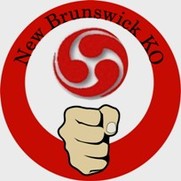
NBKO (New Brunswick Karate of Okinawa) is a non-profit fundraiser account which is managed by the Treasurer (Michelle Anderson) and an executor (Shihan Bill Adams). I have no control or access to the account. It is totally separate from CMA. The fundraiser money goes into such things as Dojo sparring gear (which I maintain/clean/transport) and special events like annual seminars which are FREE to all CMA/NBKO students! Dues are collected annually from all students and Black belts from January through March each year.
- Shihan C
- Shihan C
If you've trained with us before, but stopped, always remember you're welcome to come back any time!!!
Defending yourself, the LAW, and what you can legally do in New Brunswick and/or Maine (Click appropriate button below):
